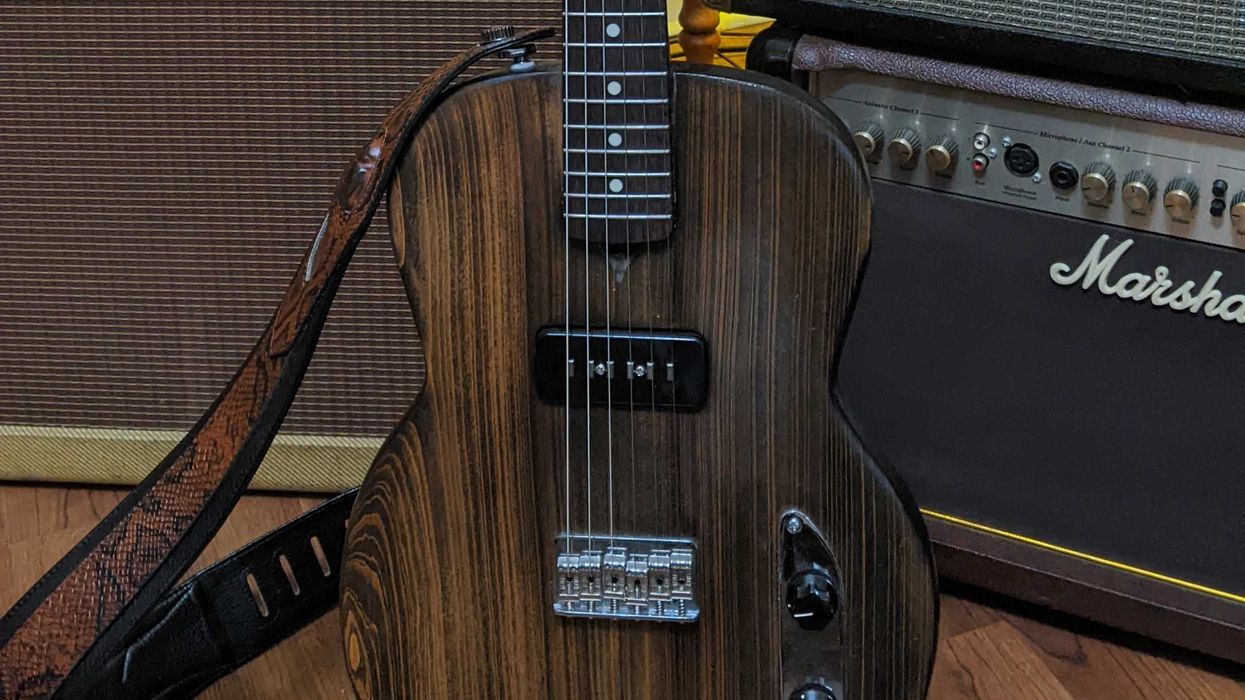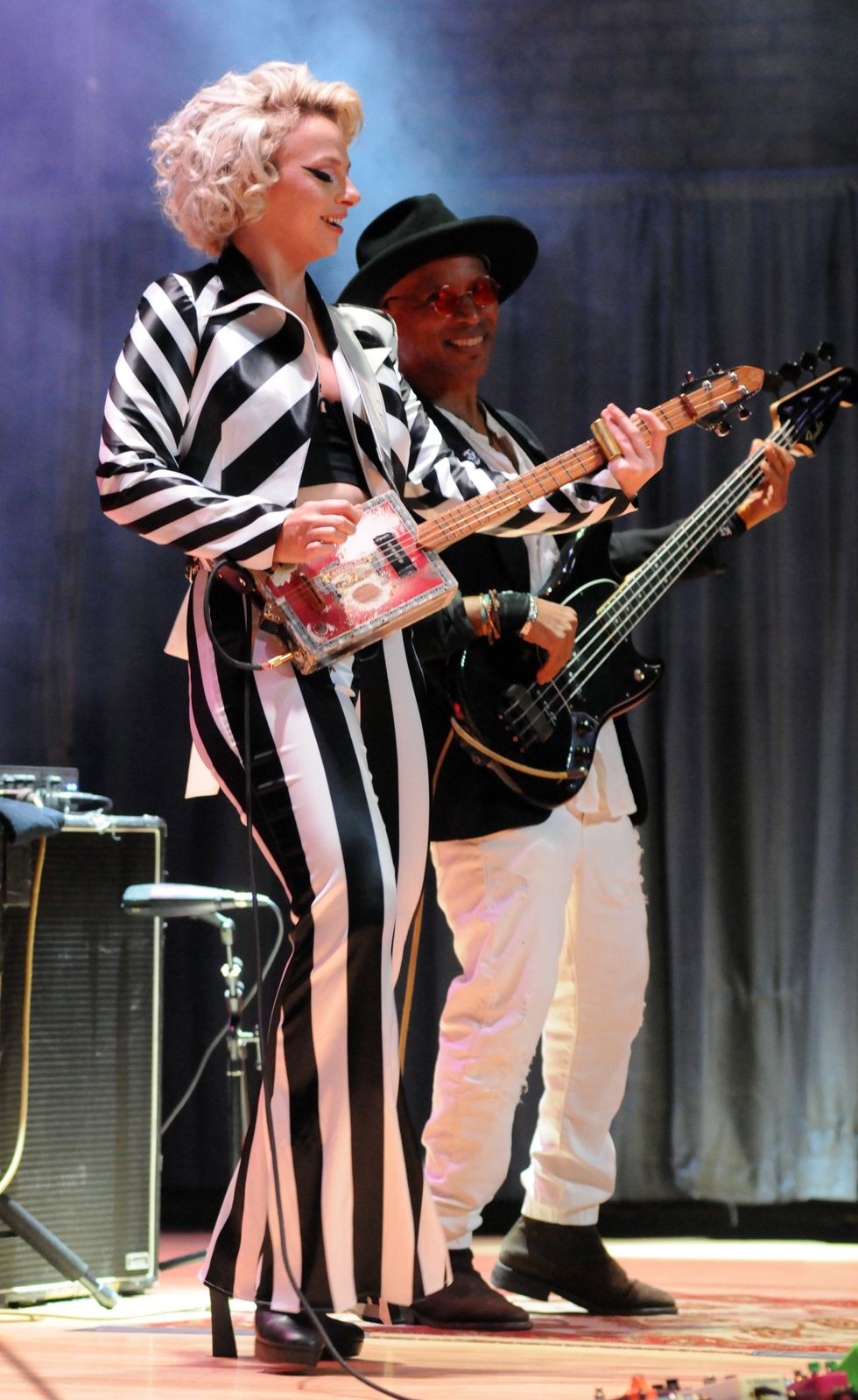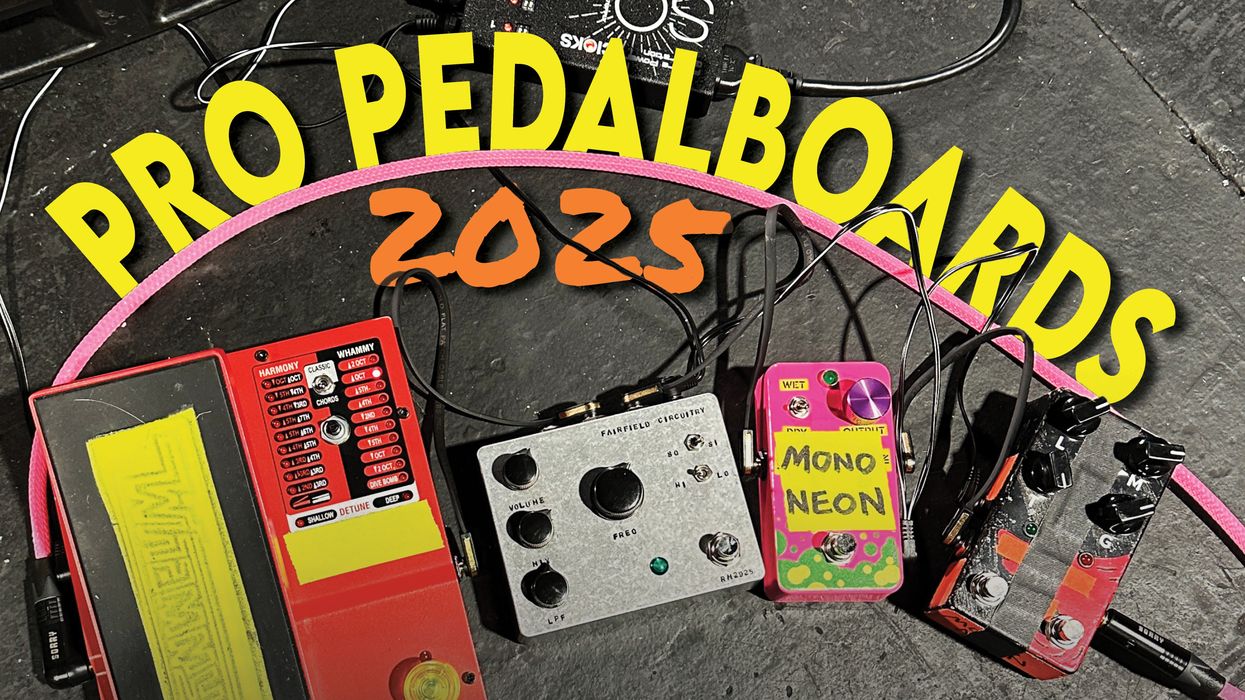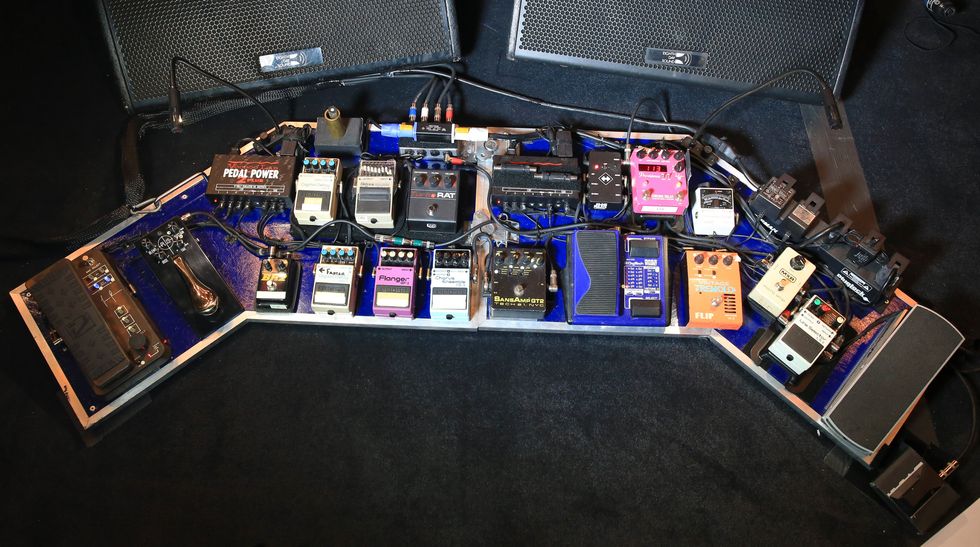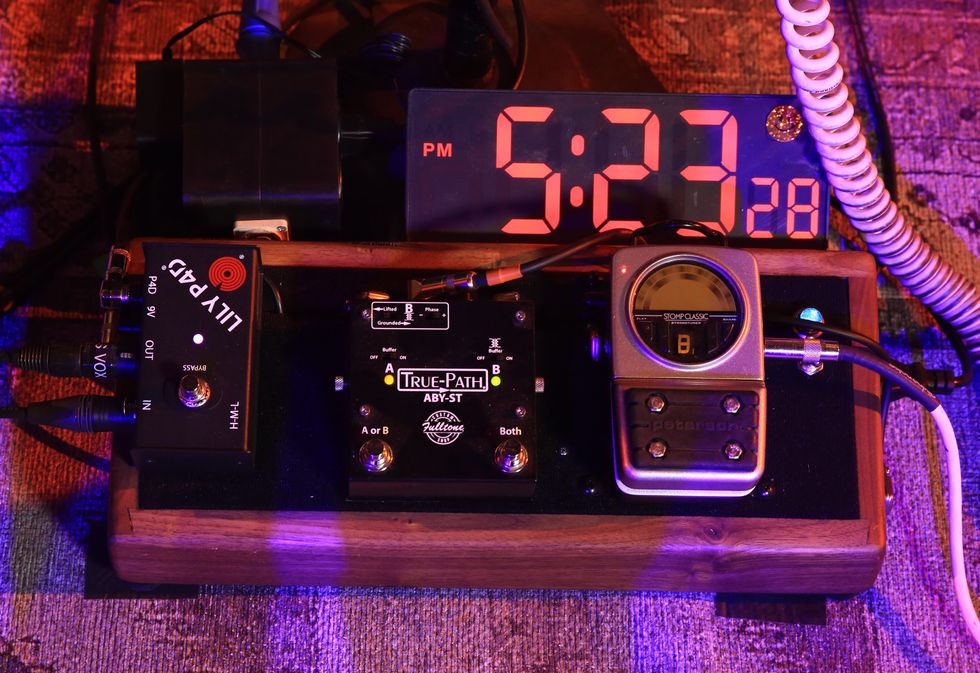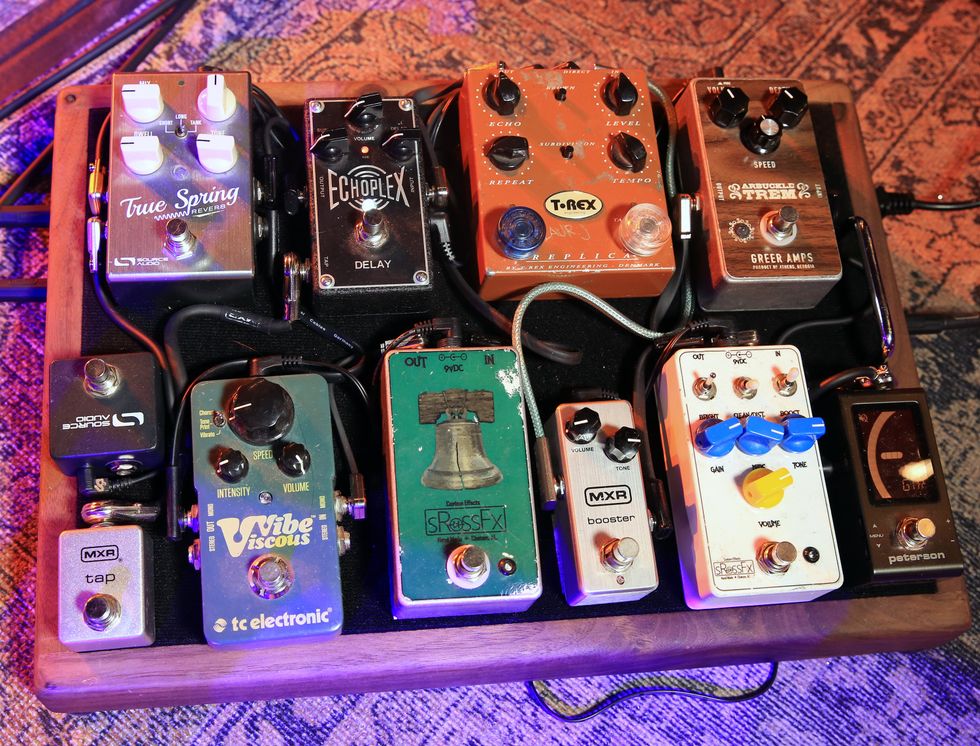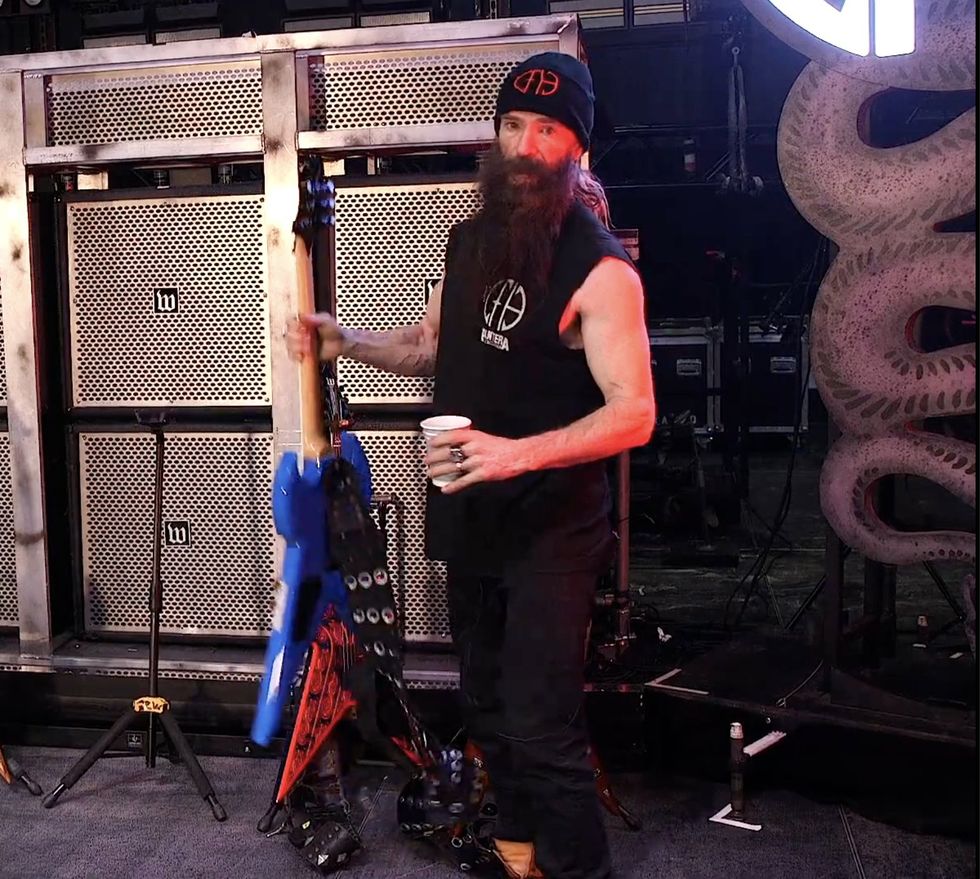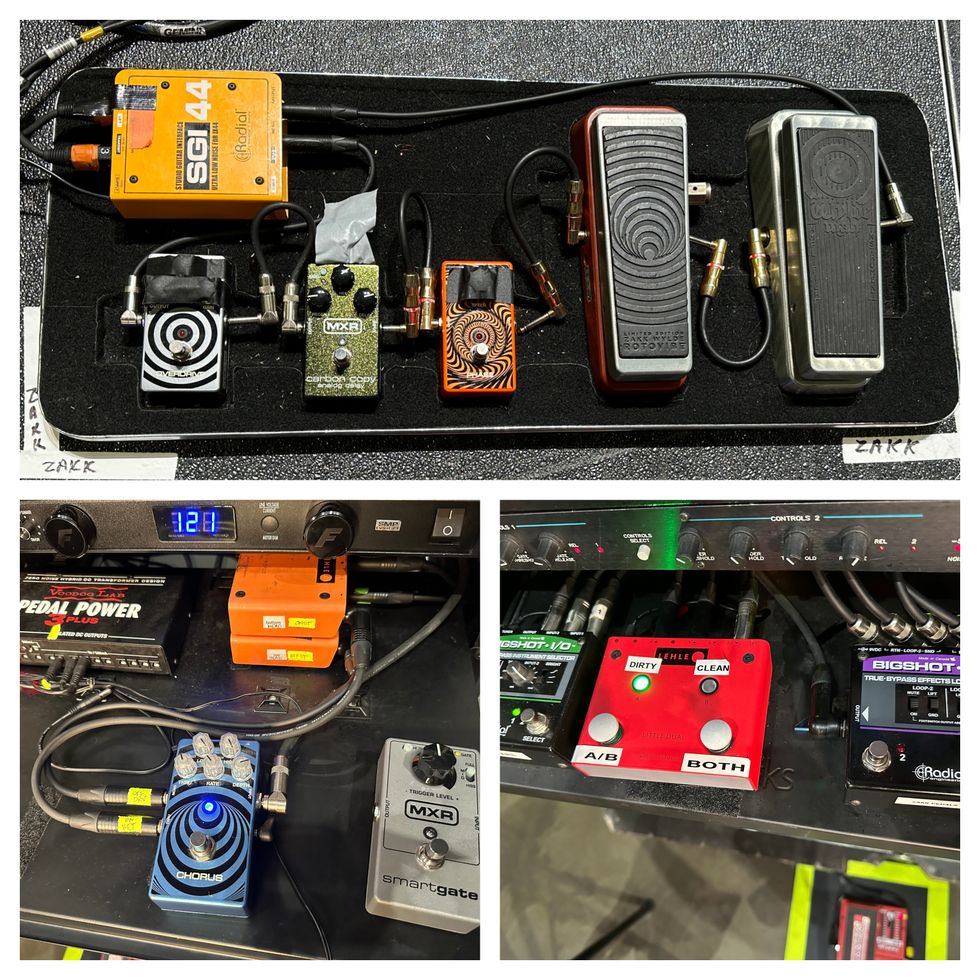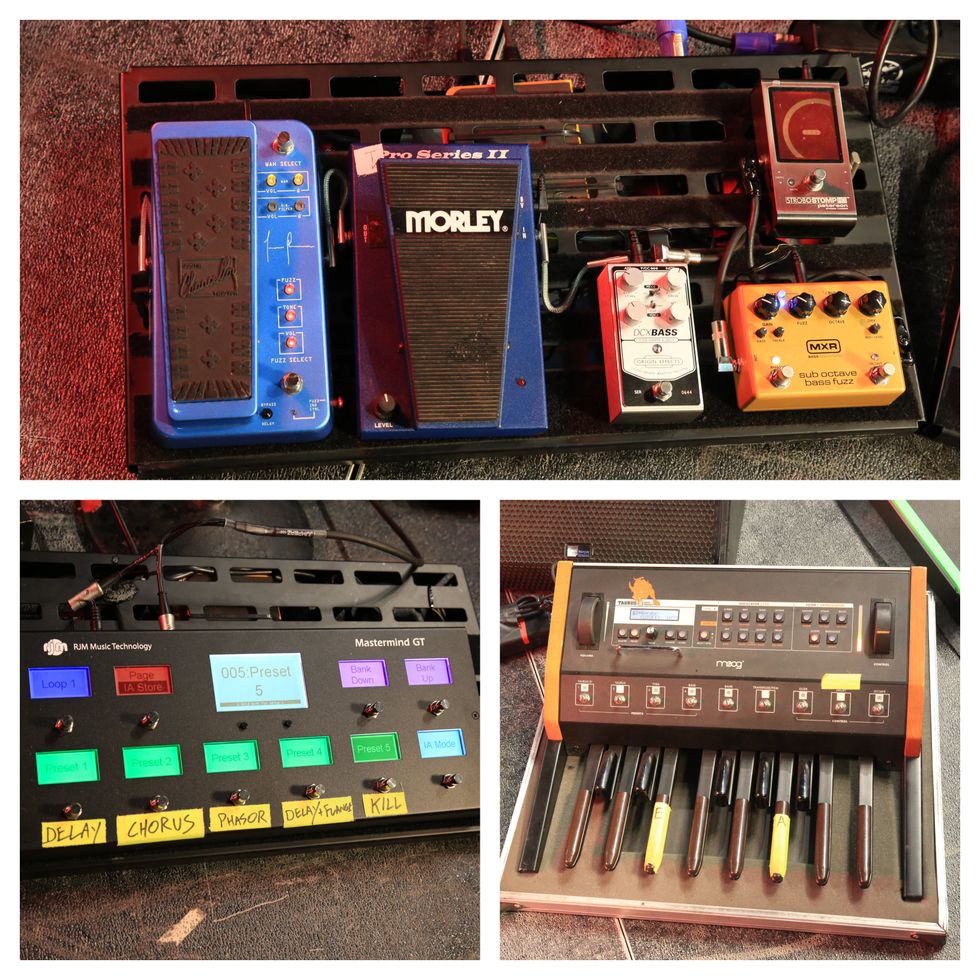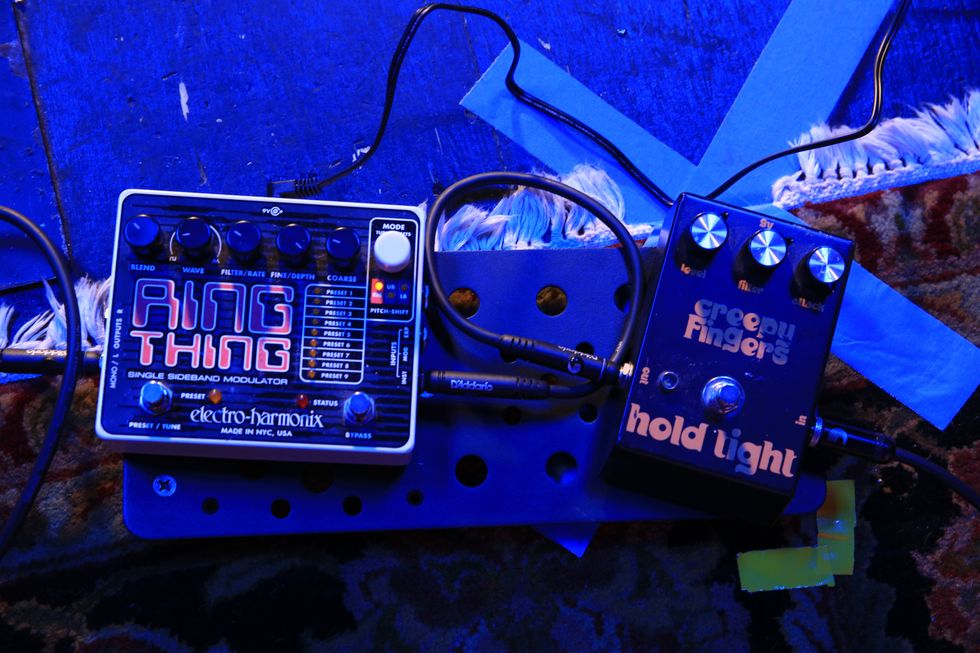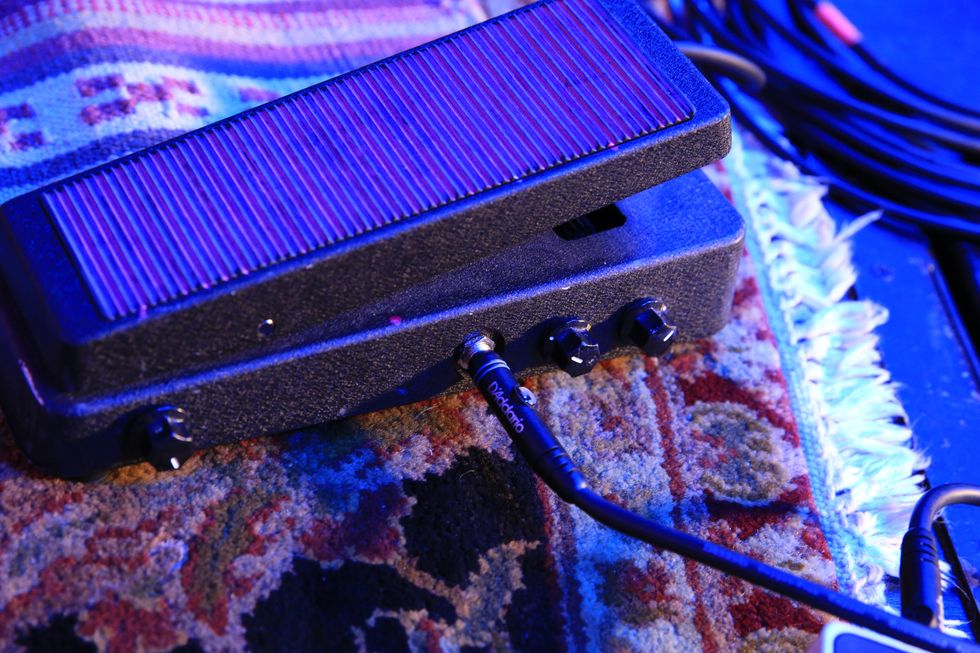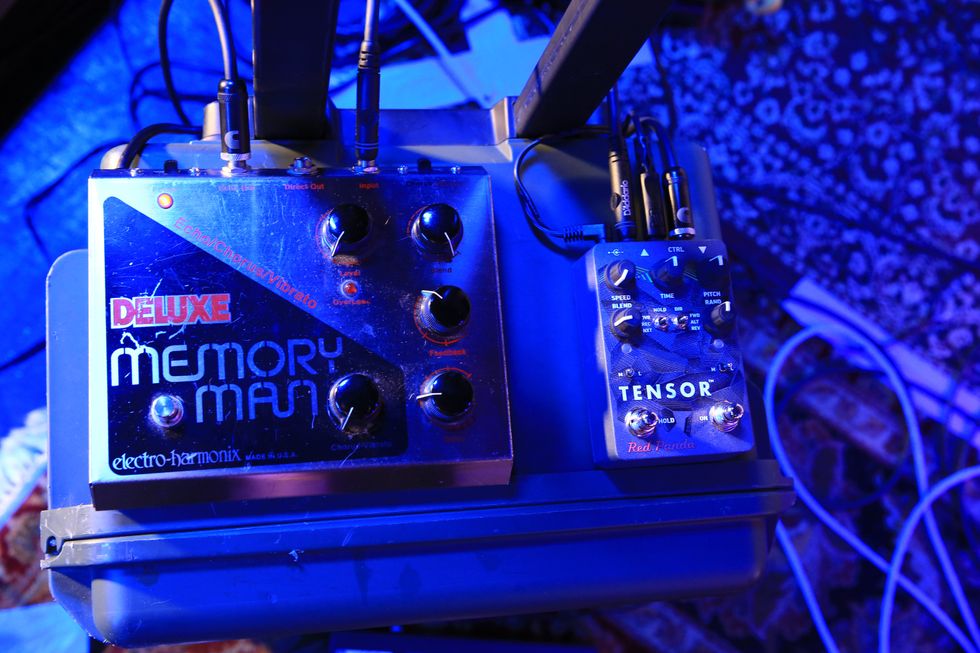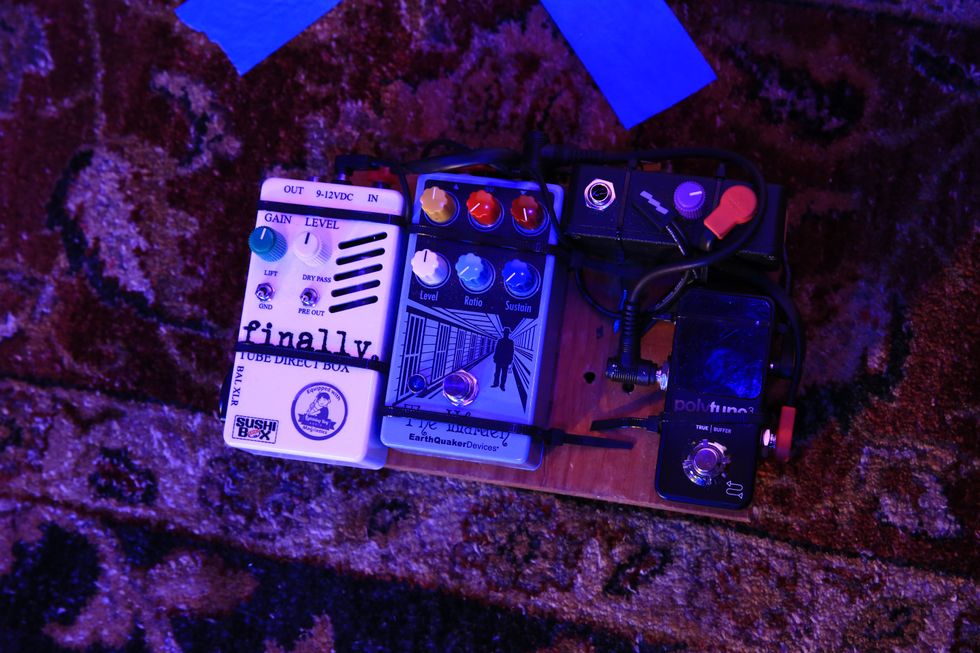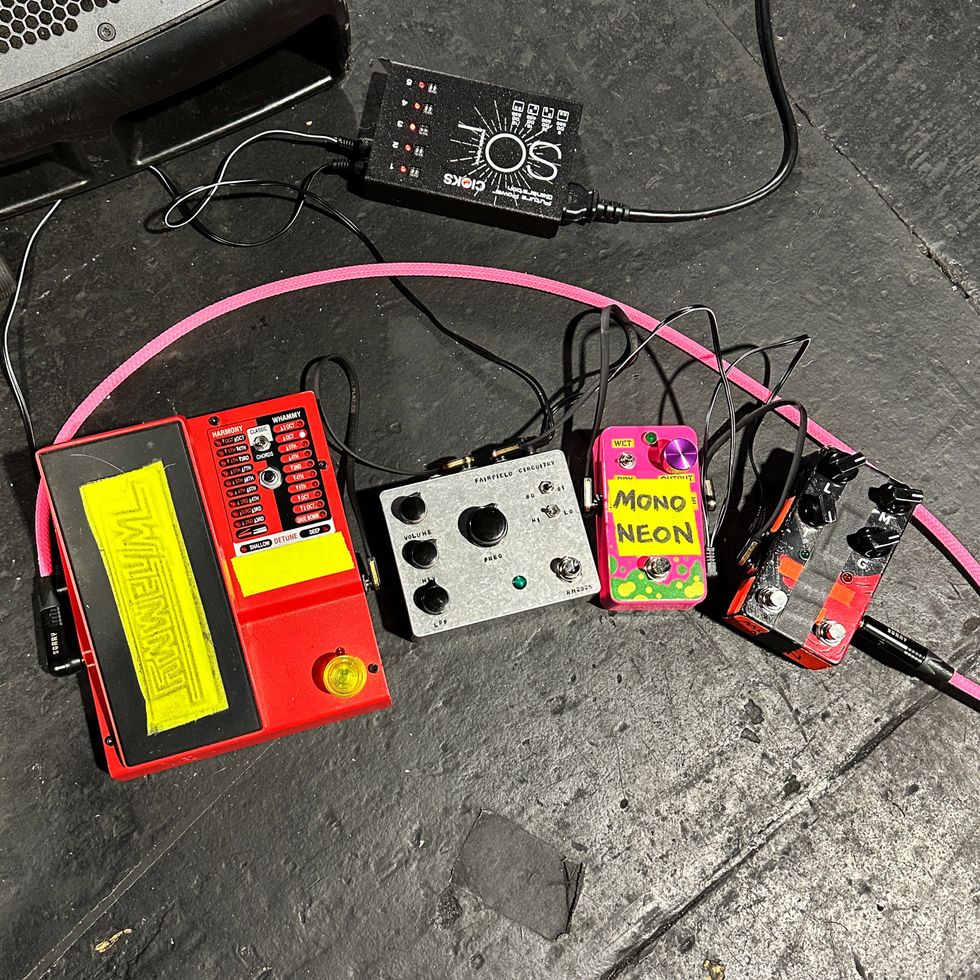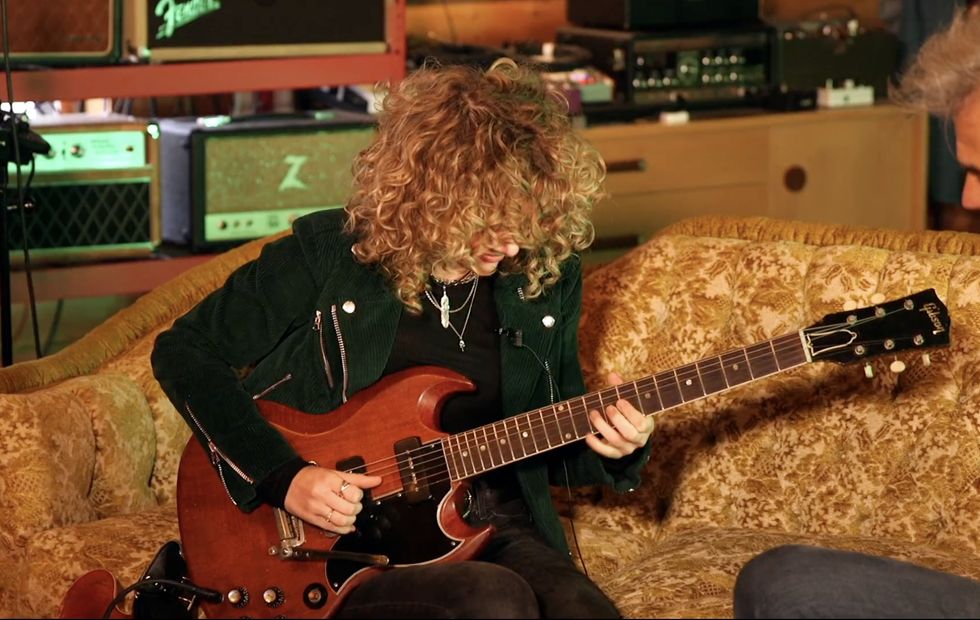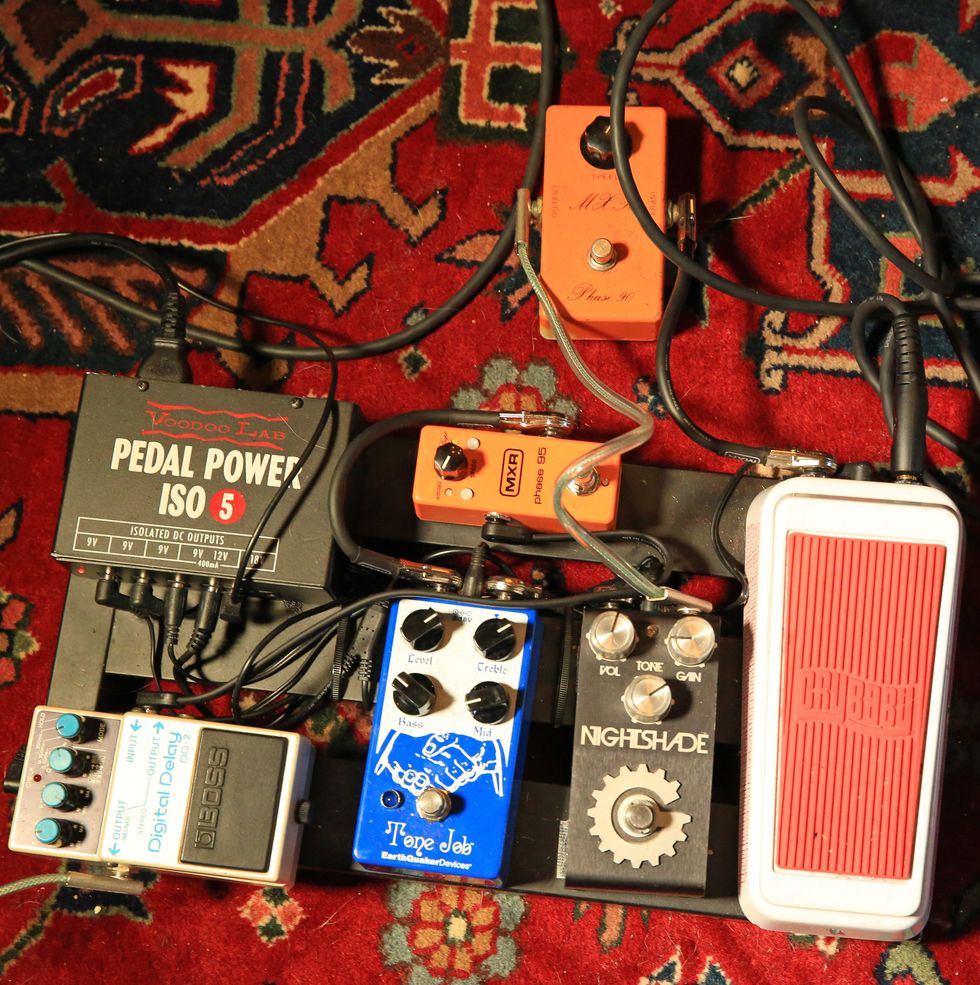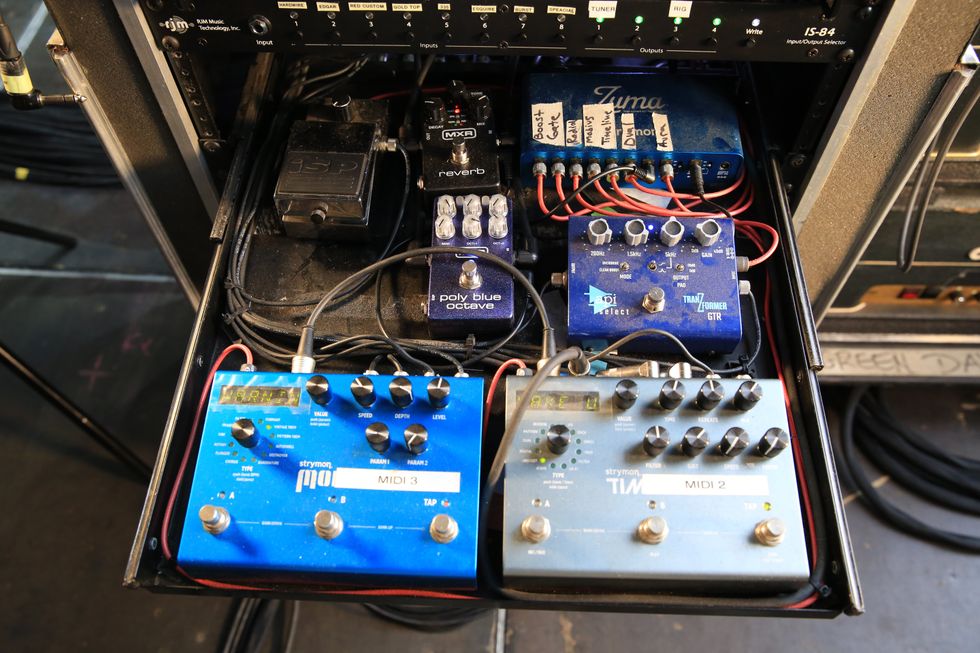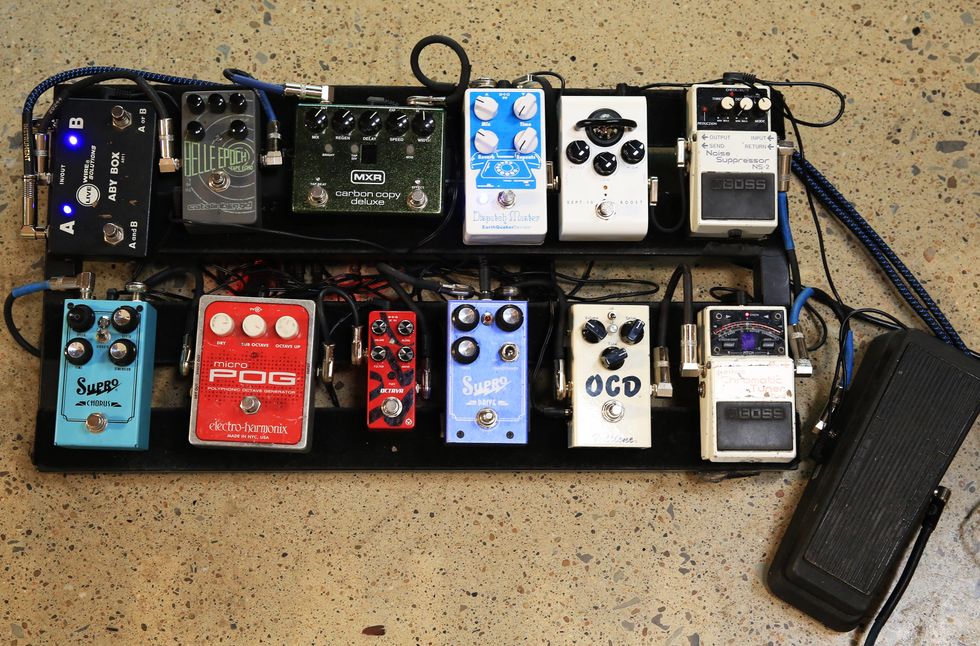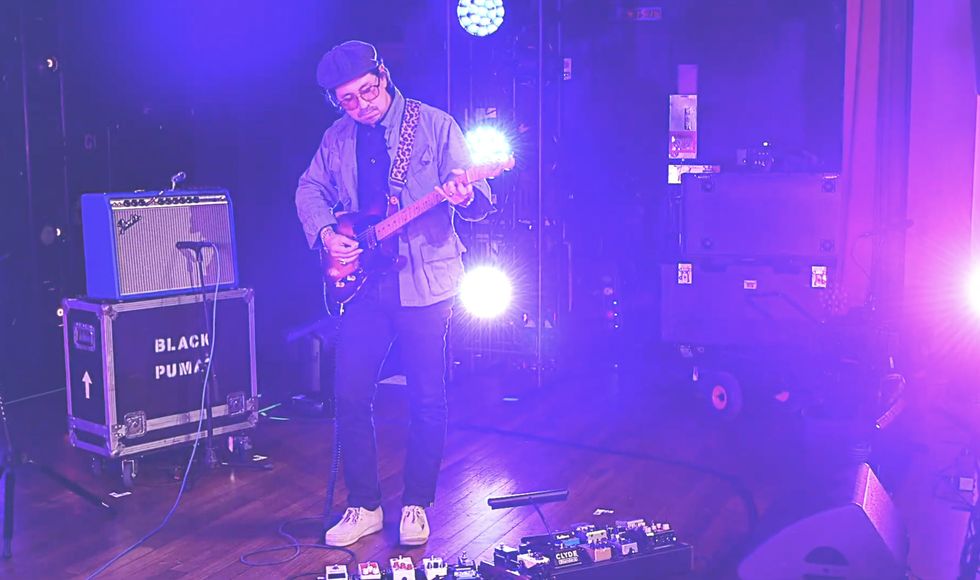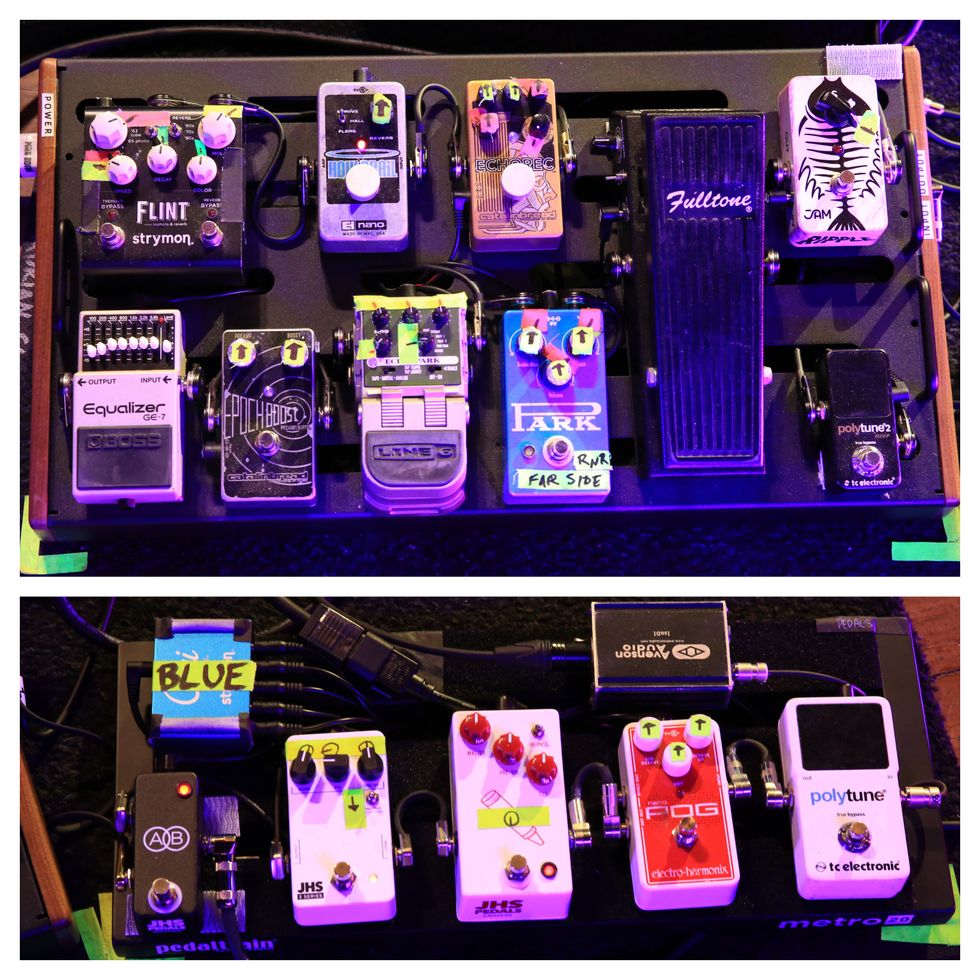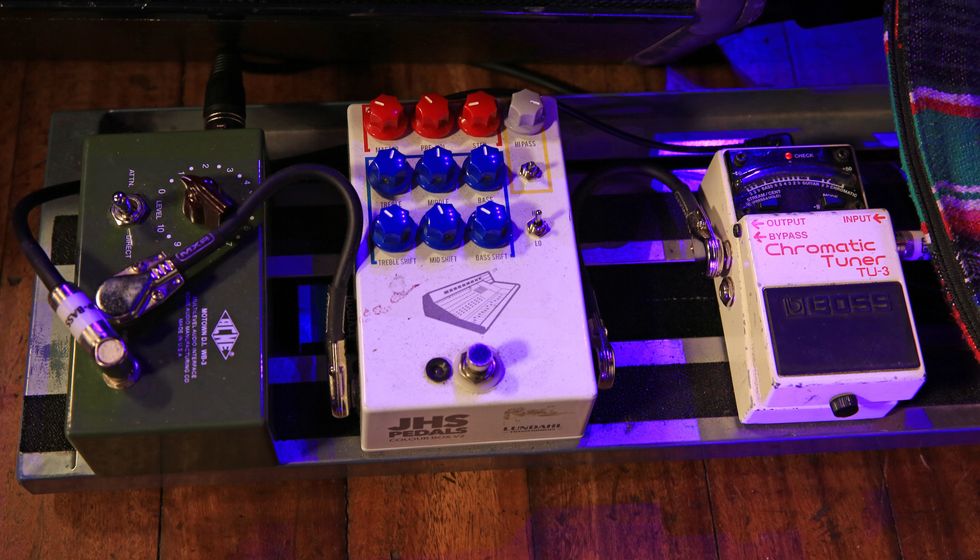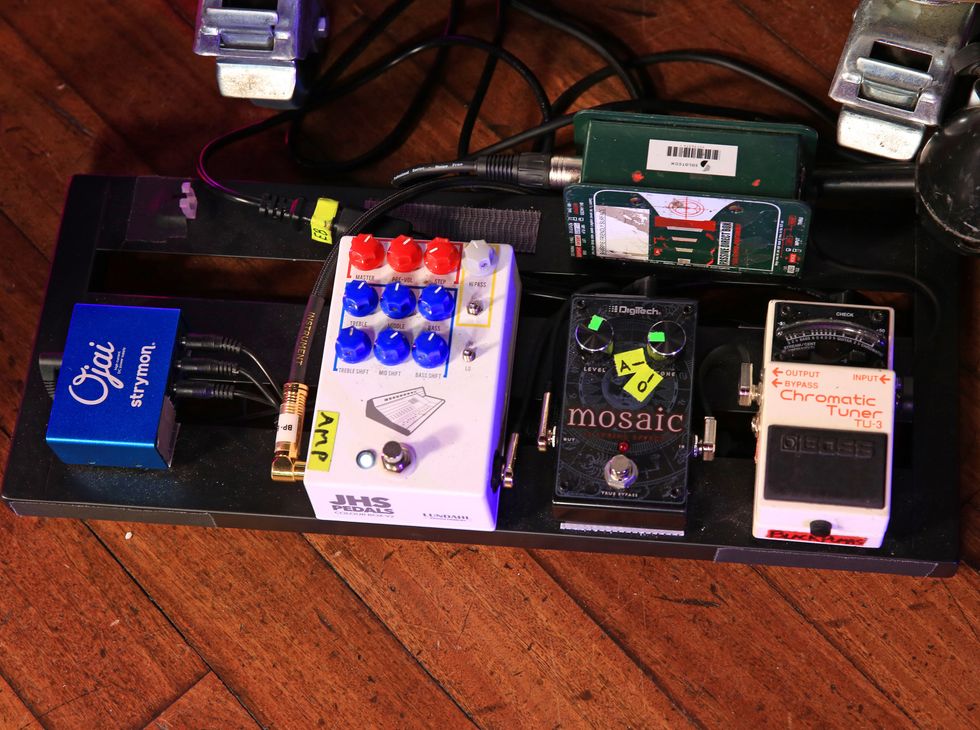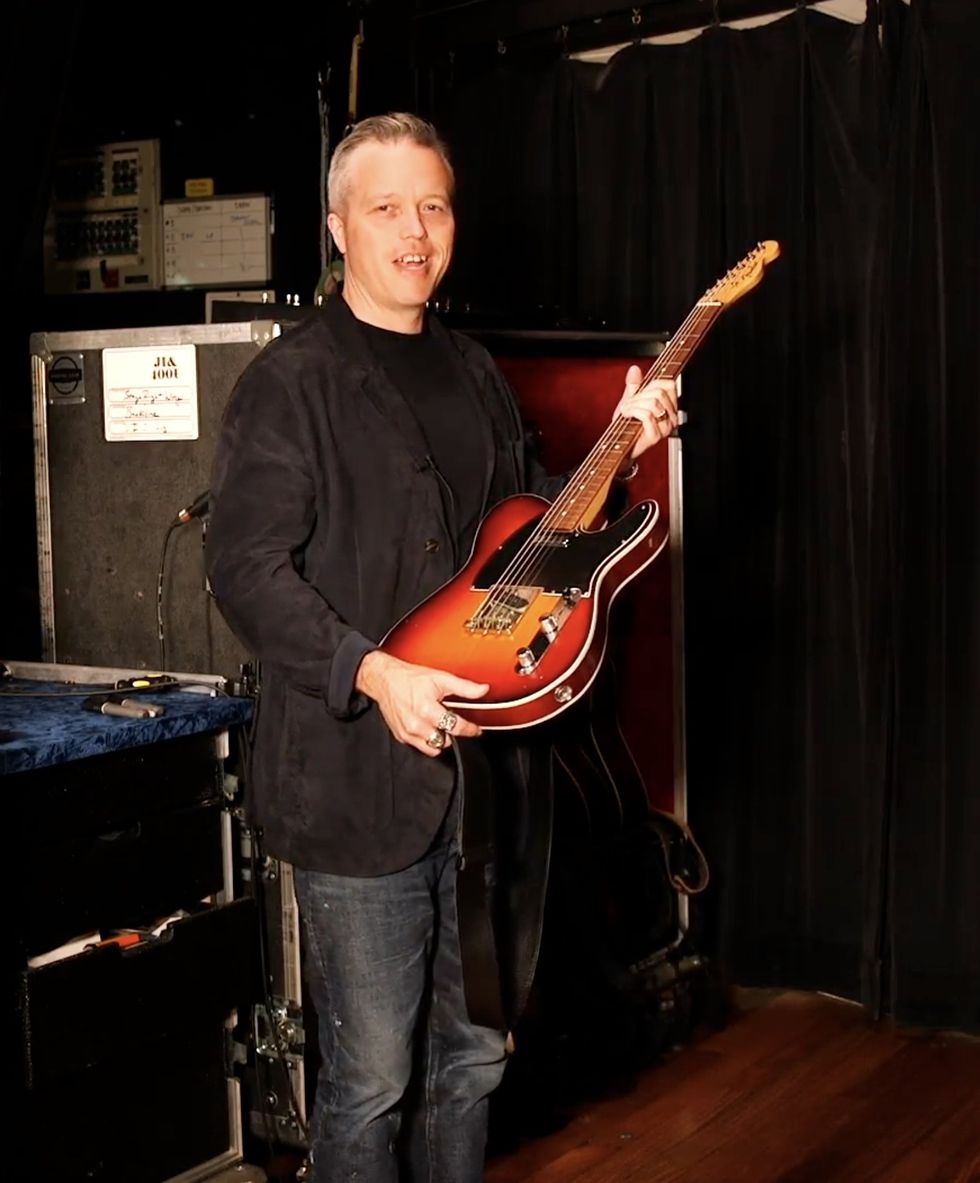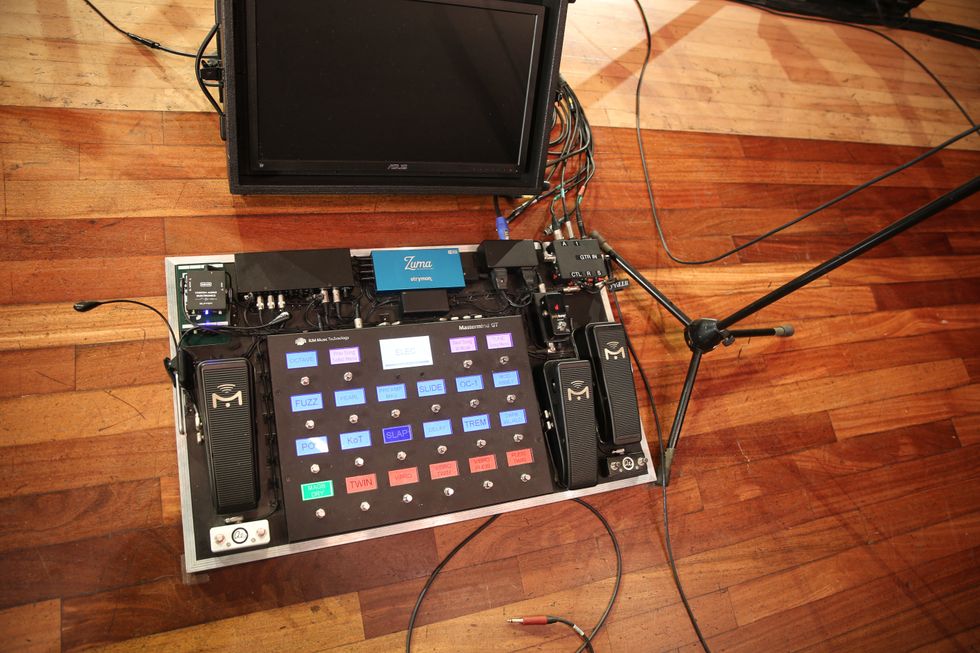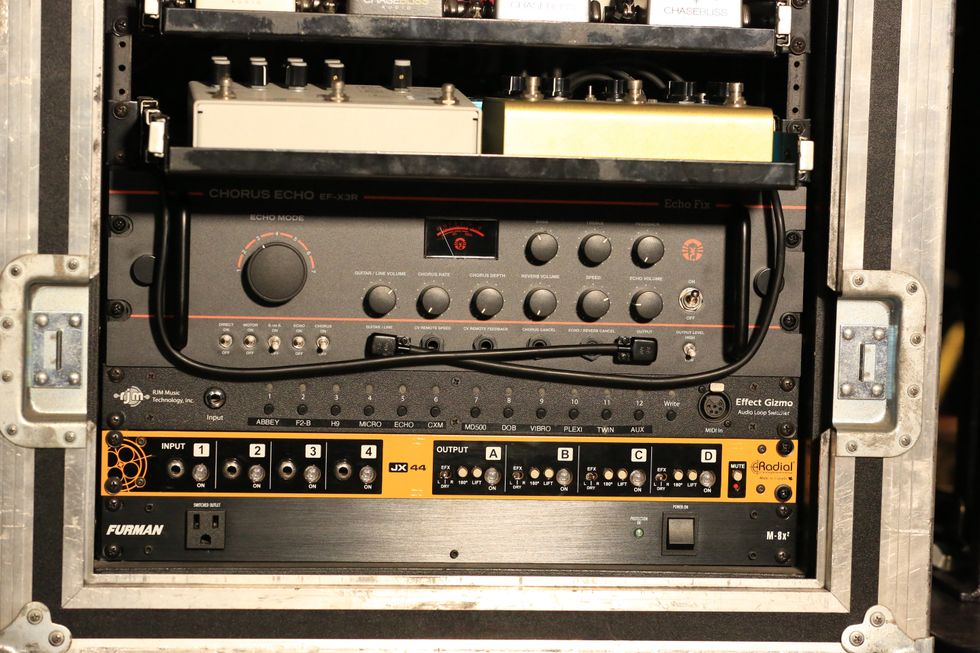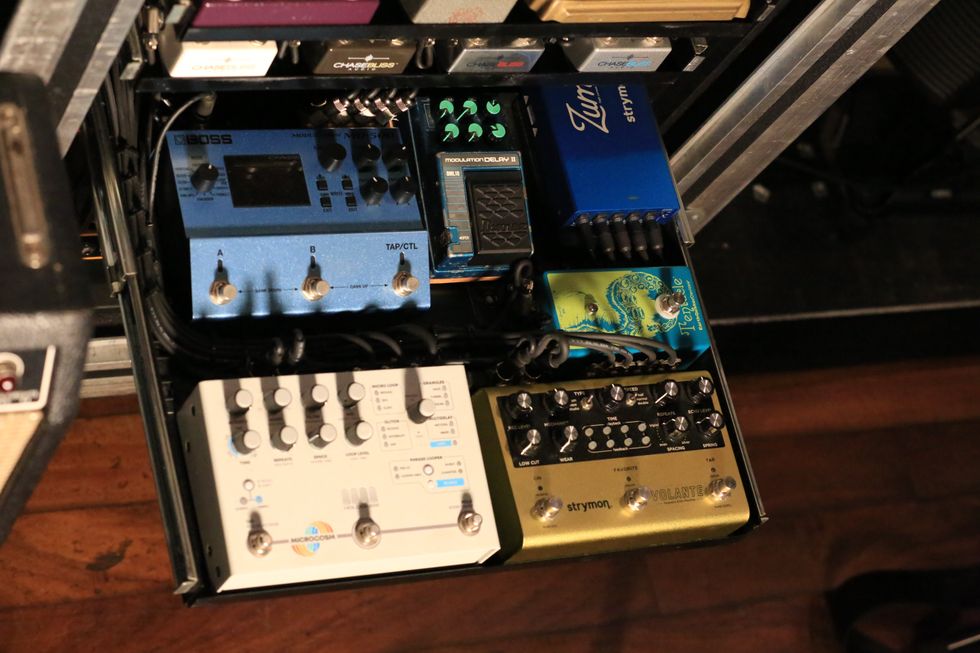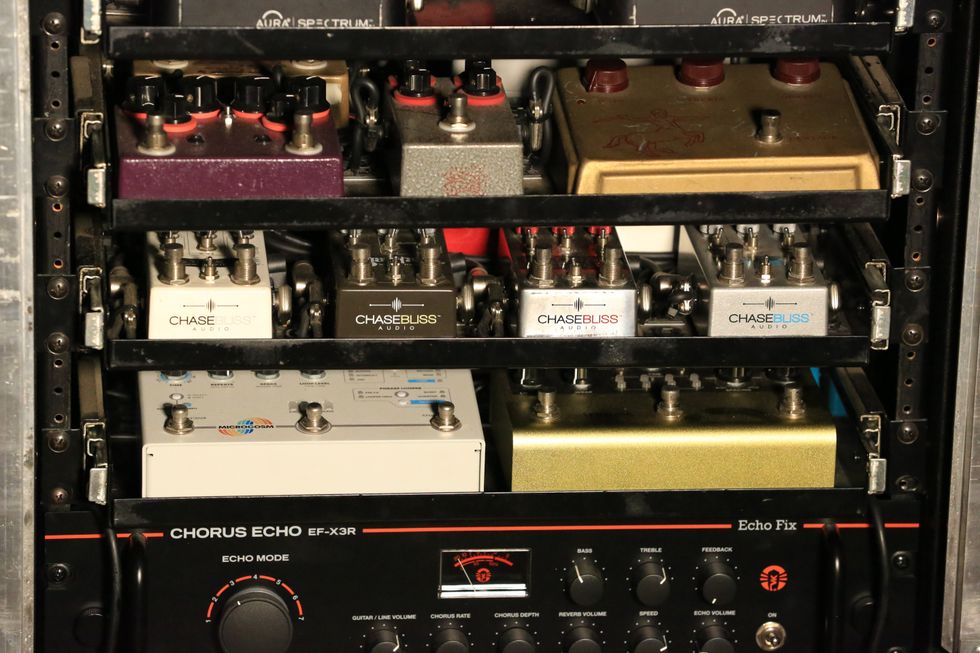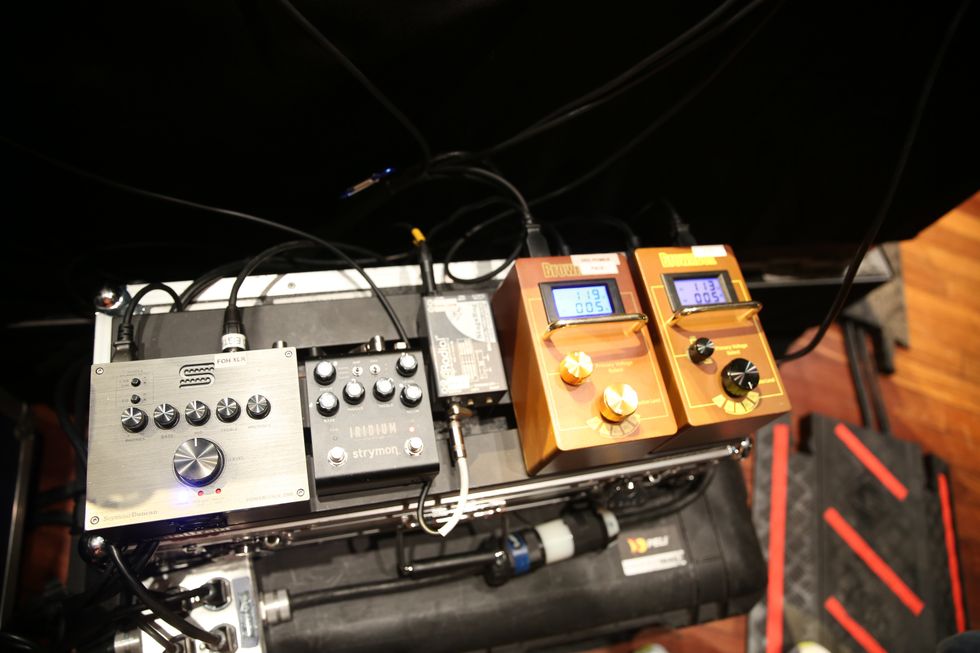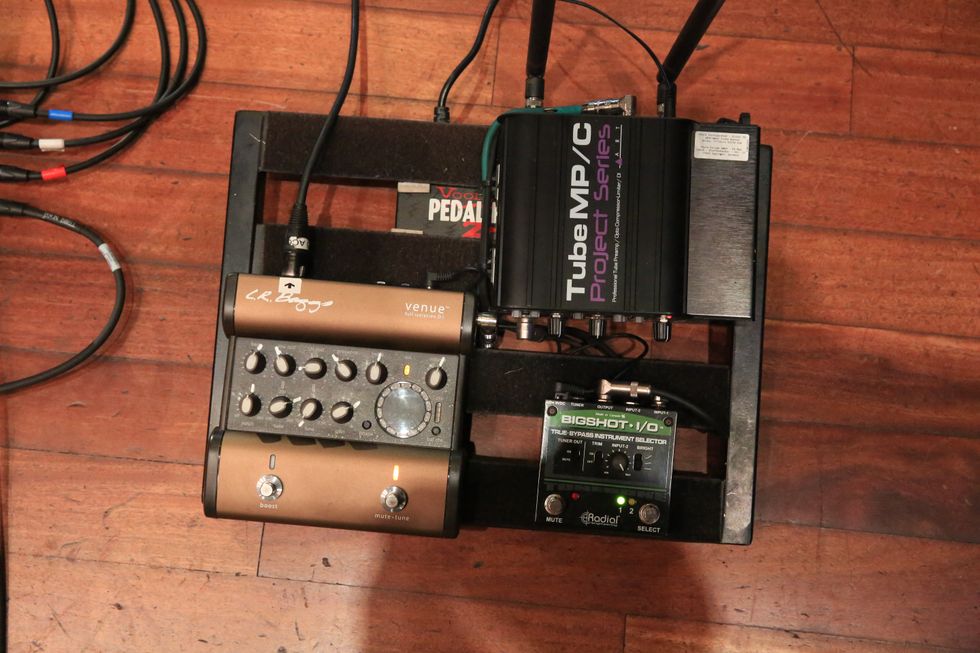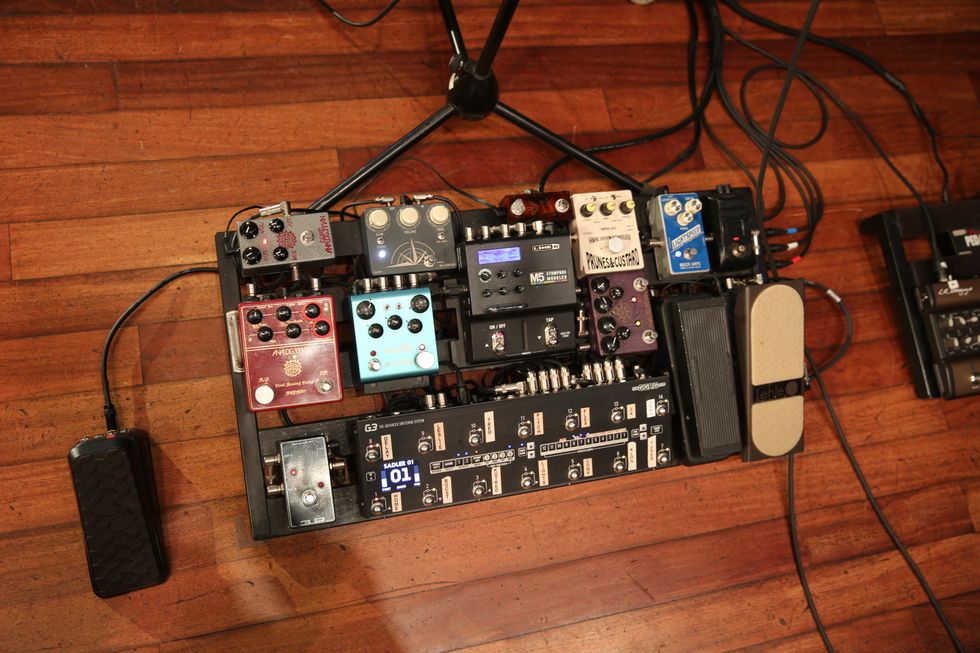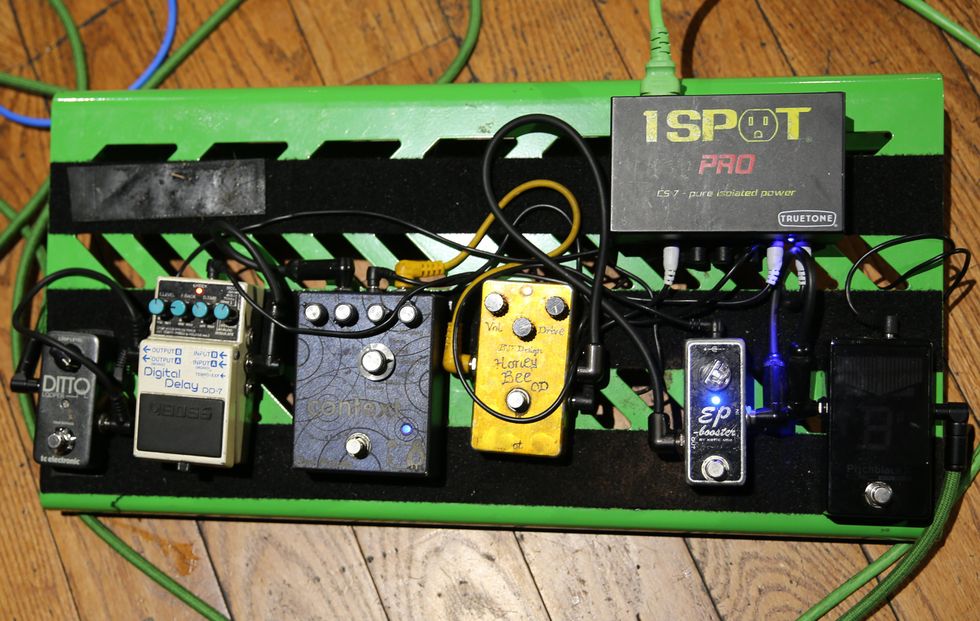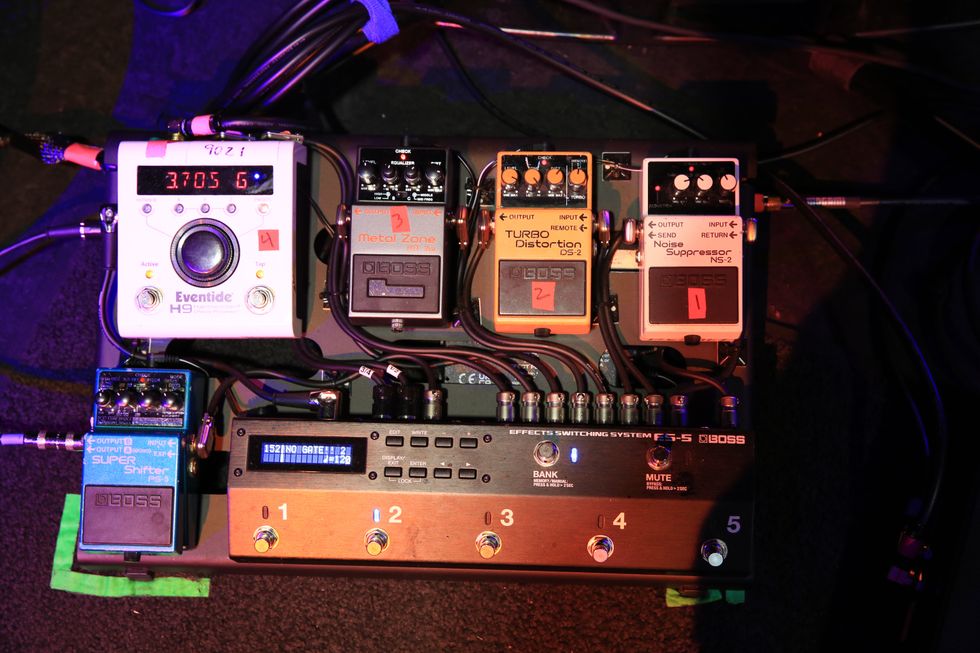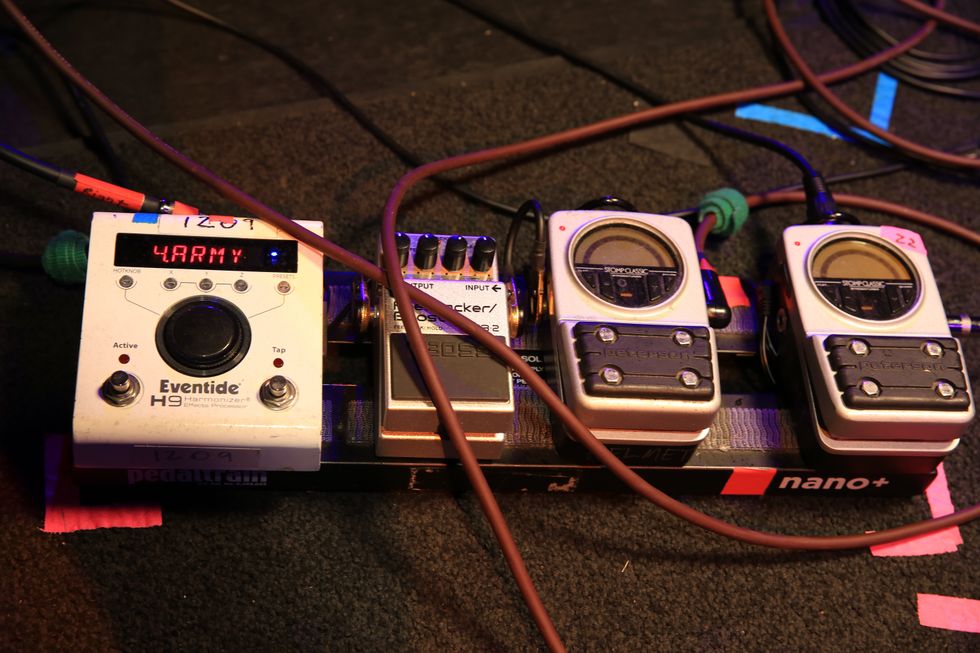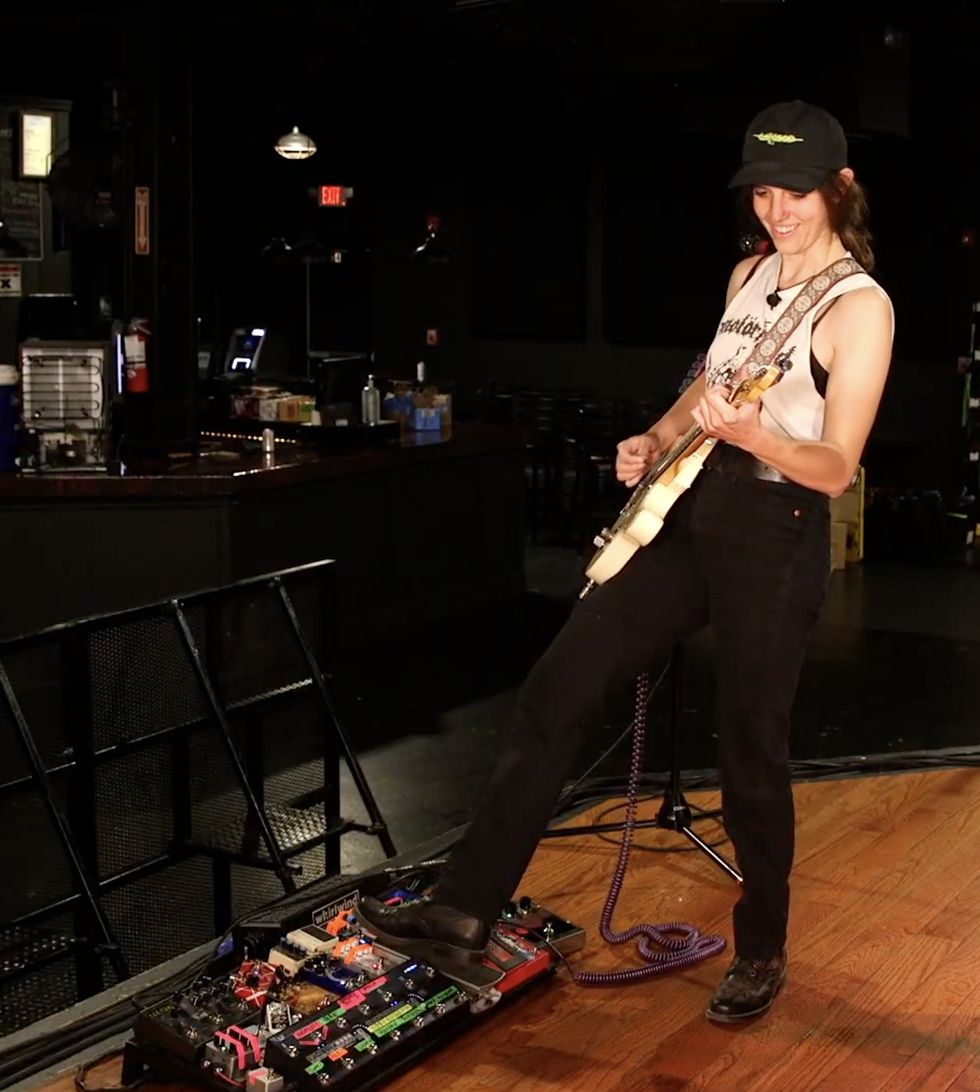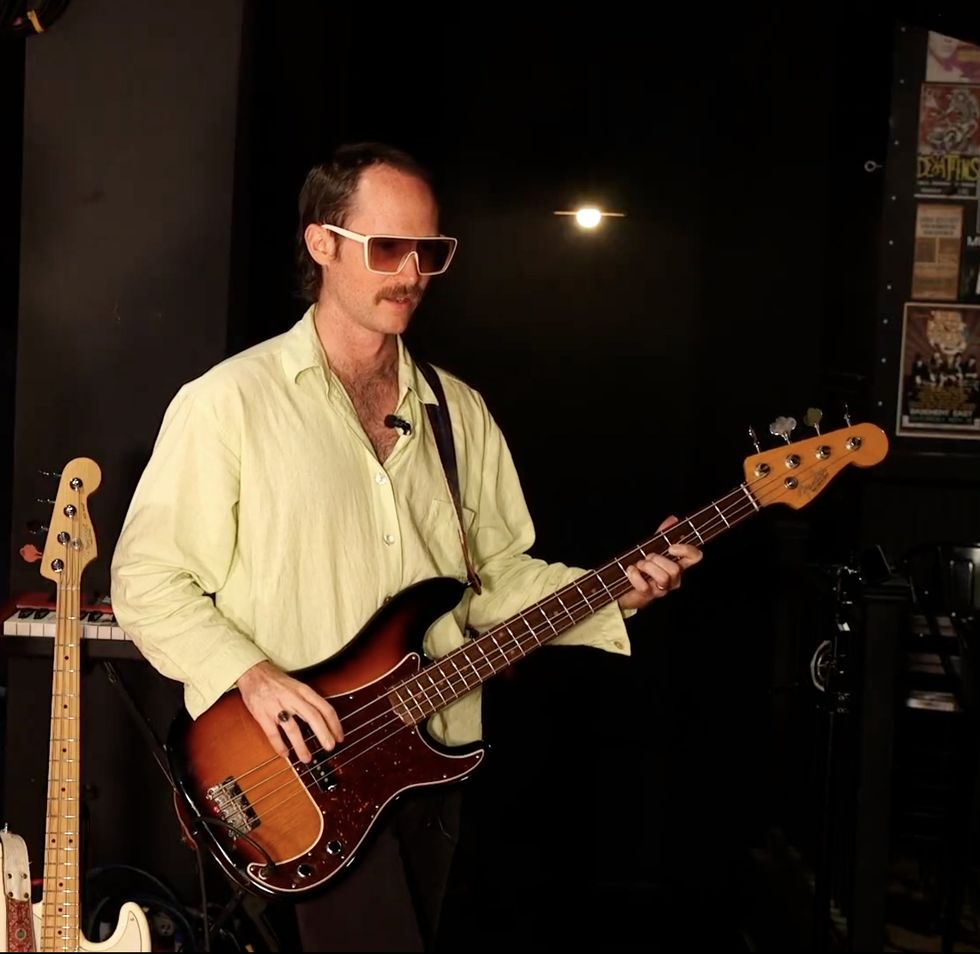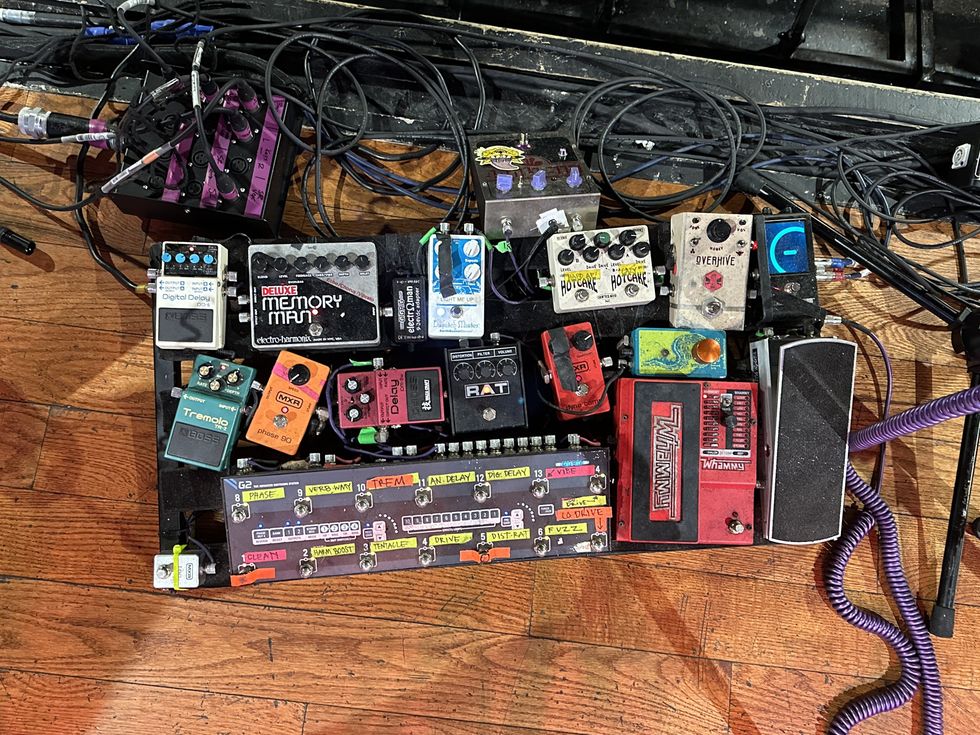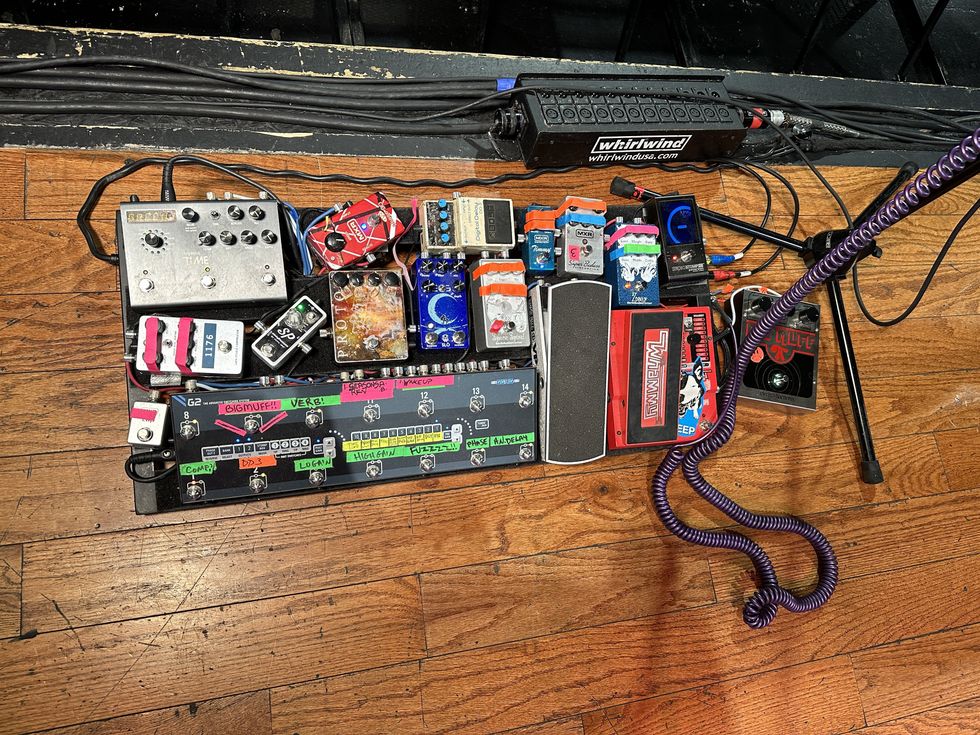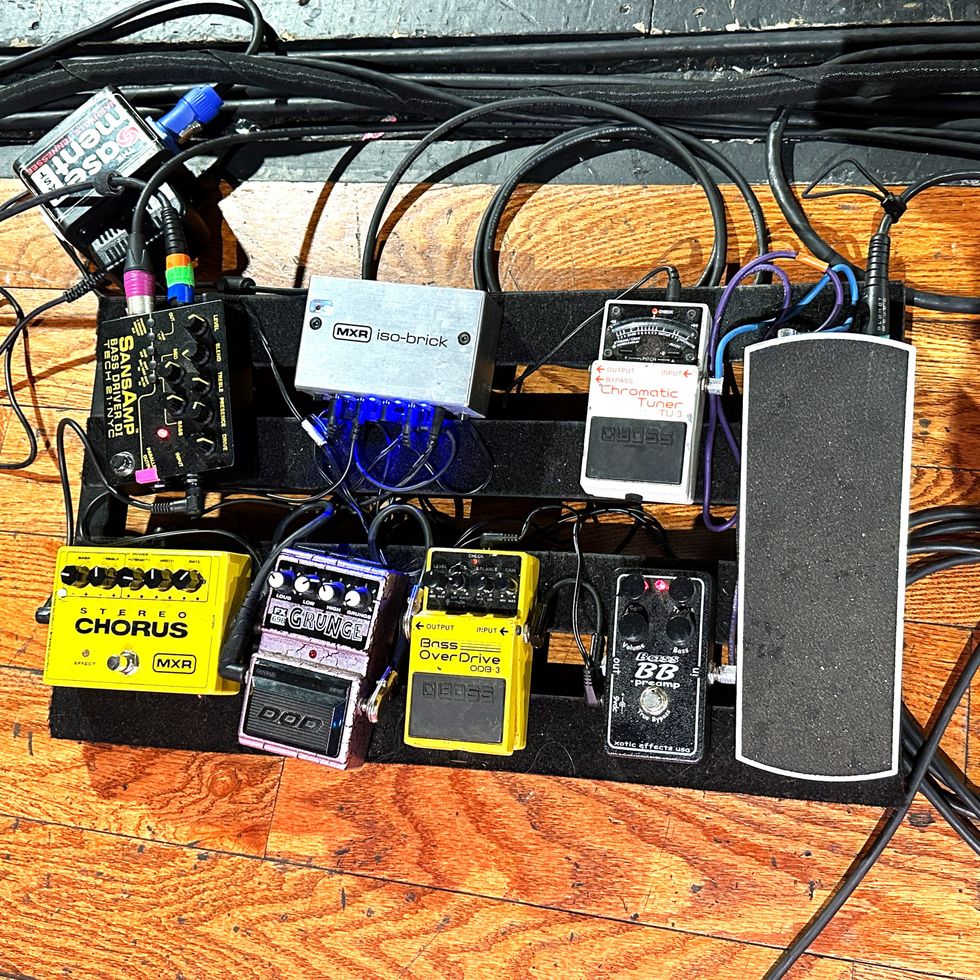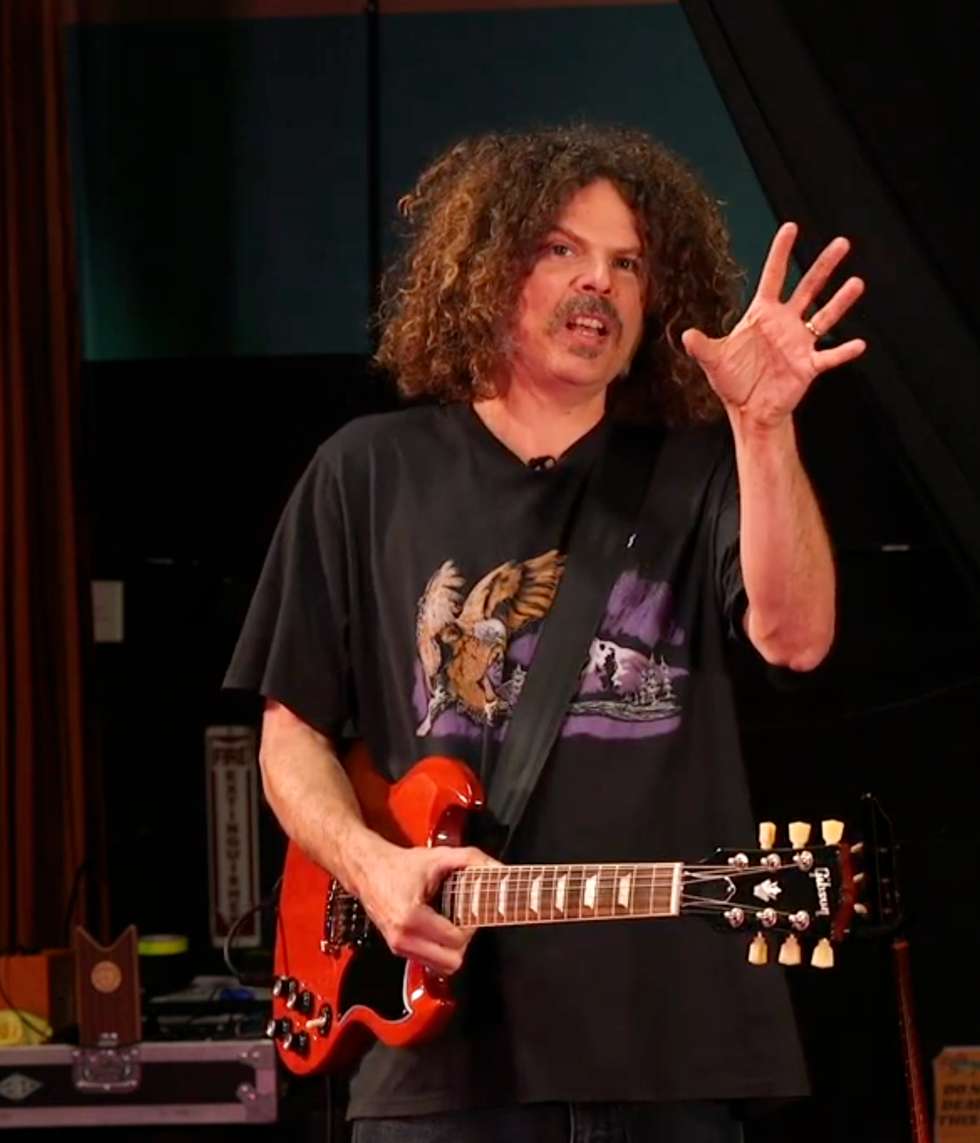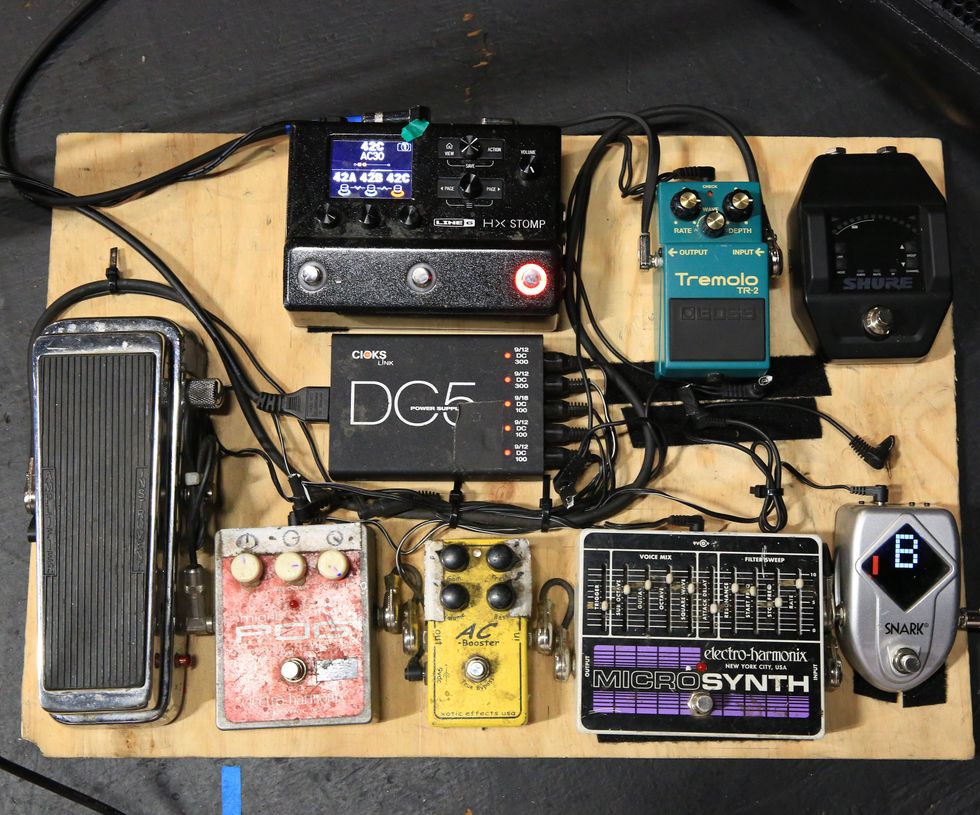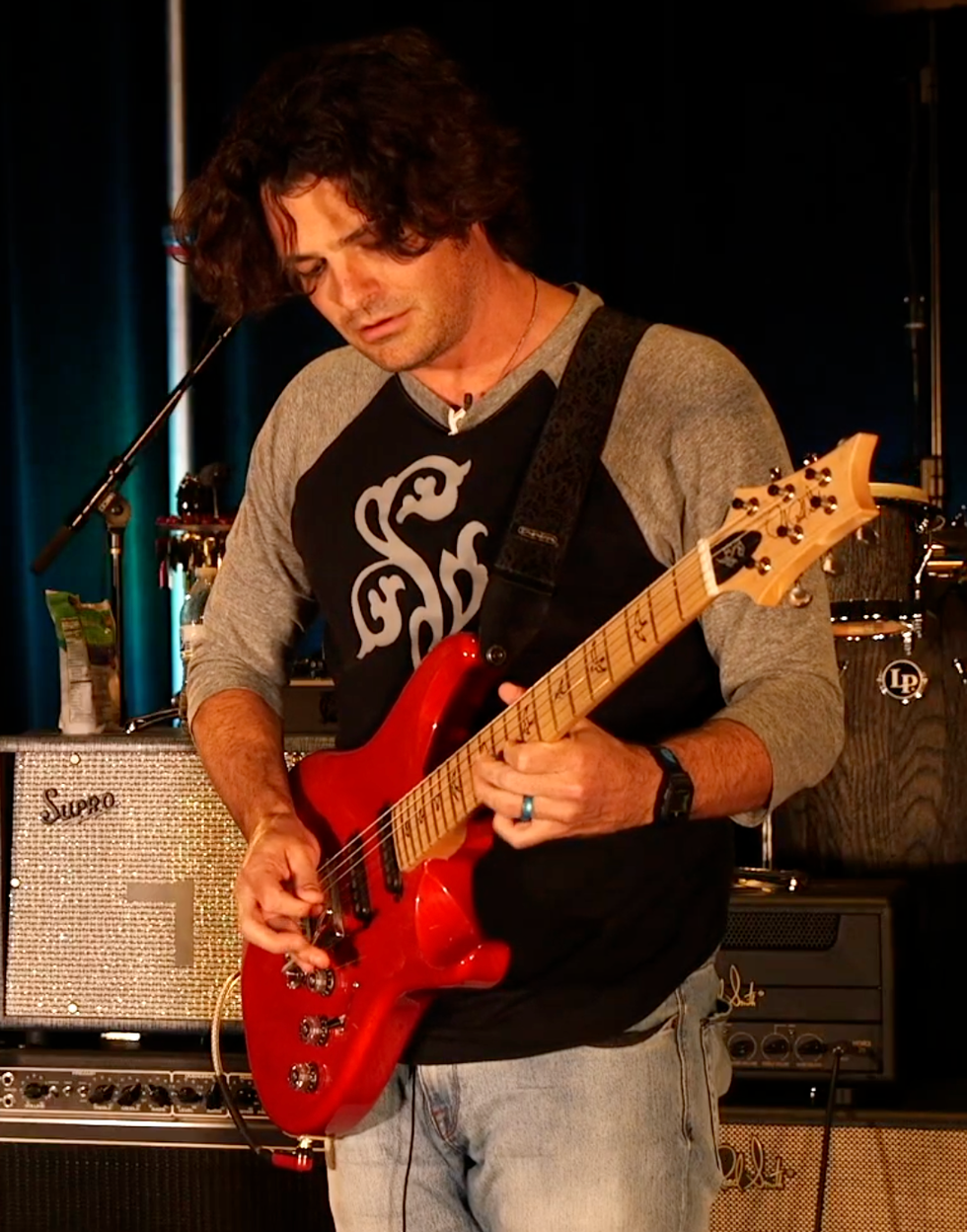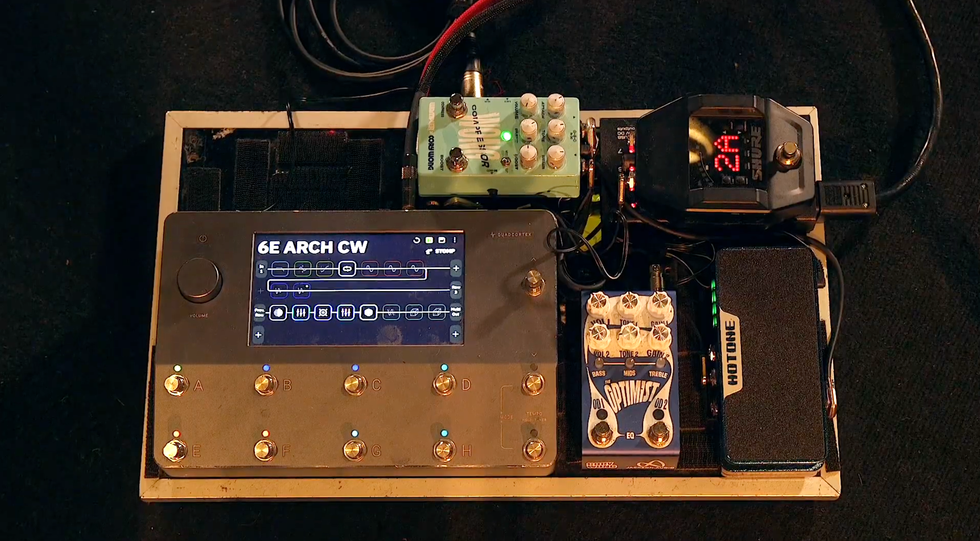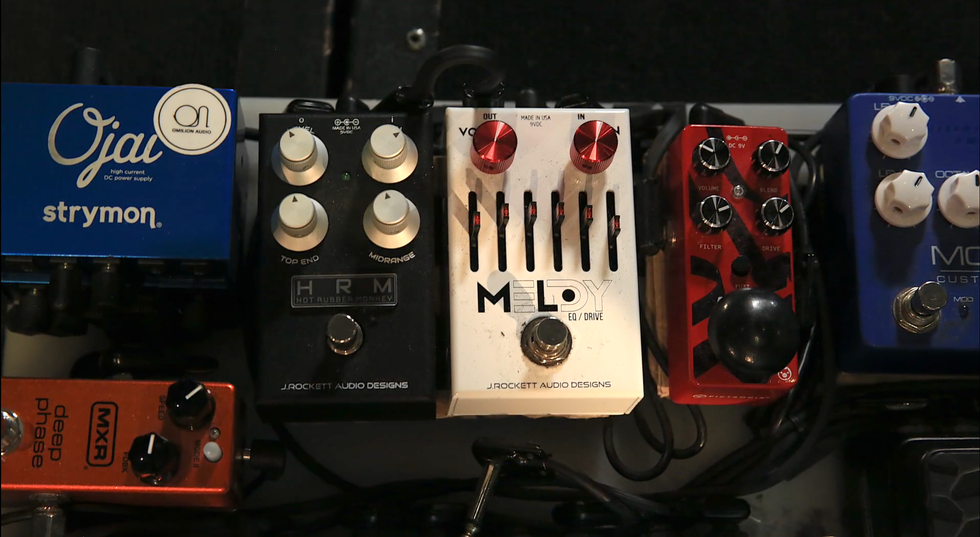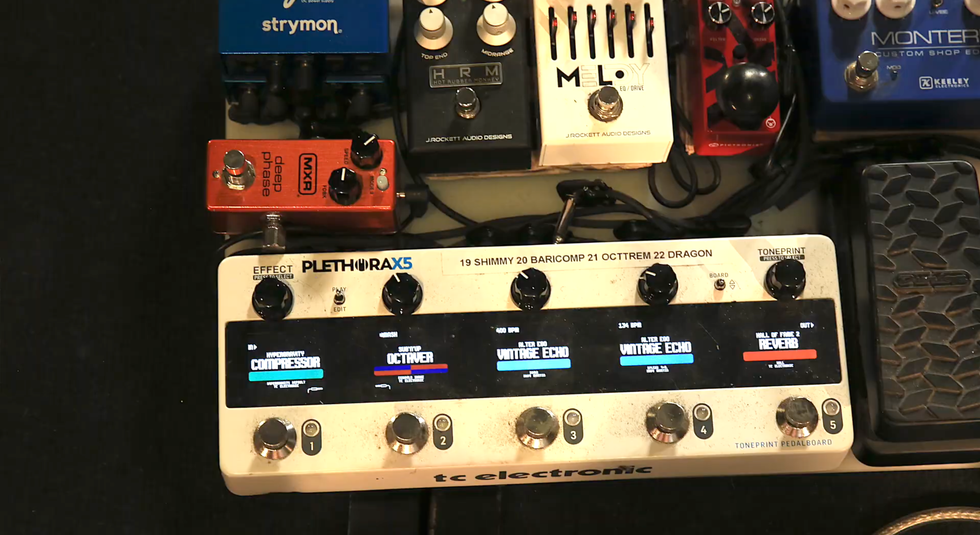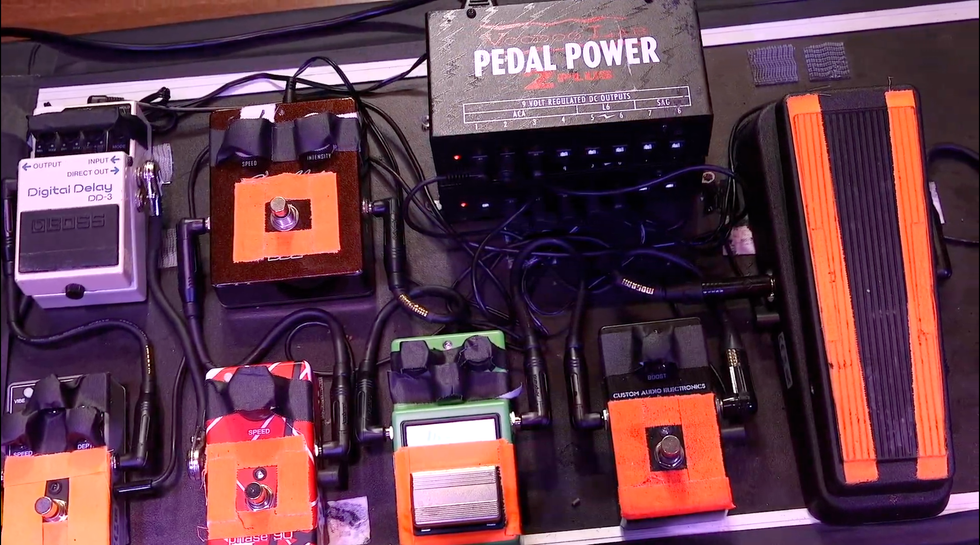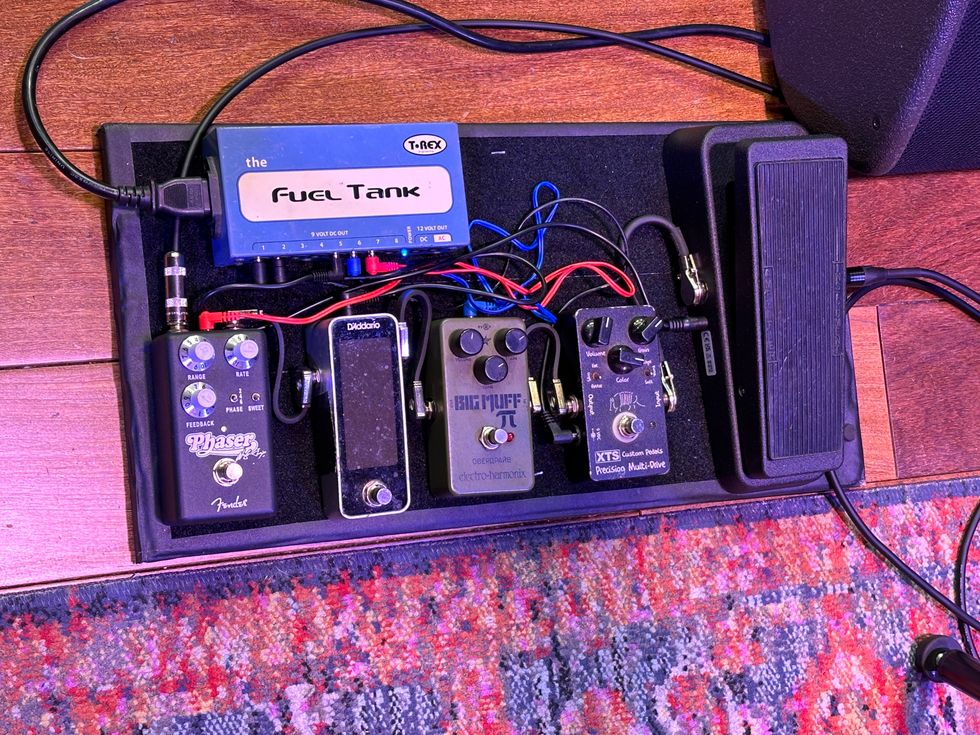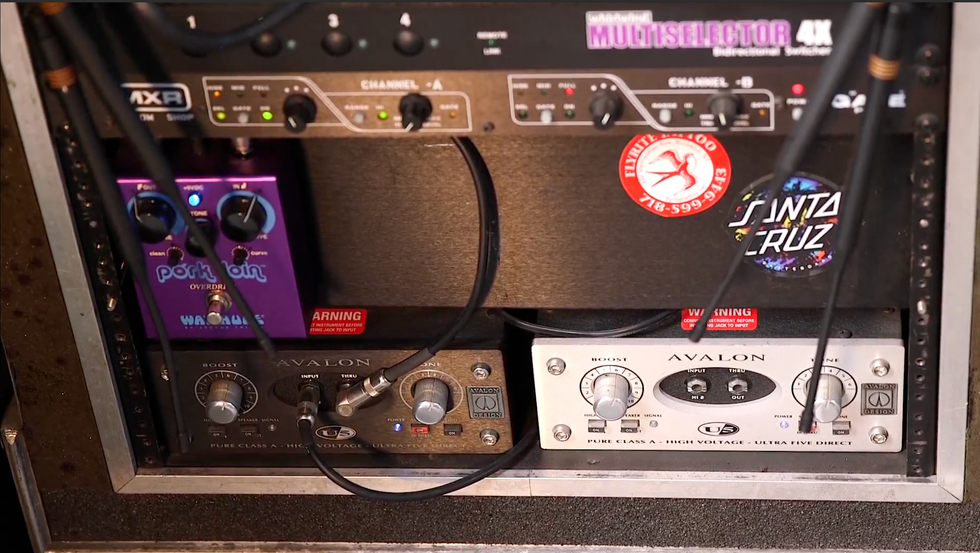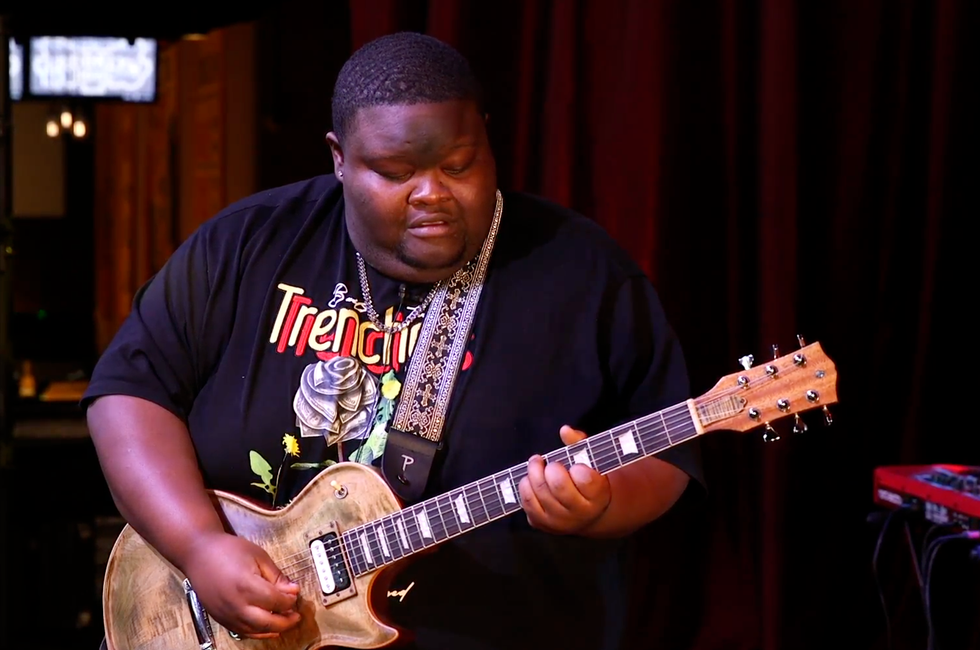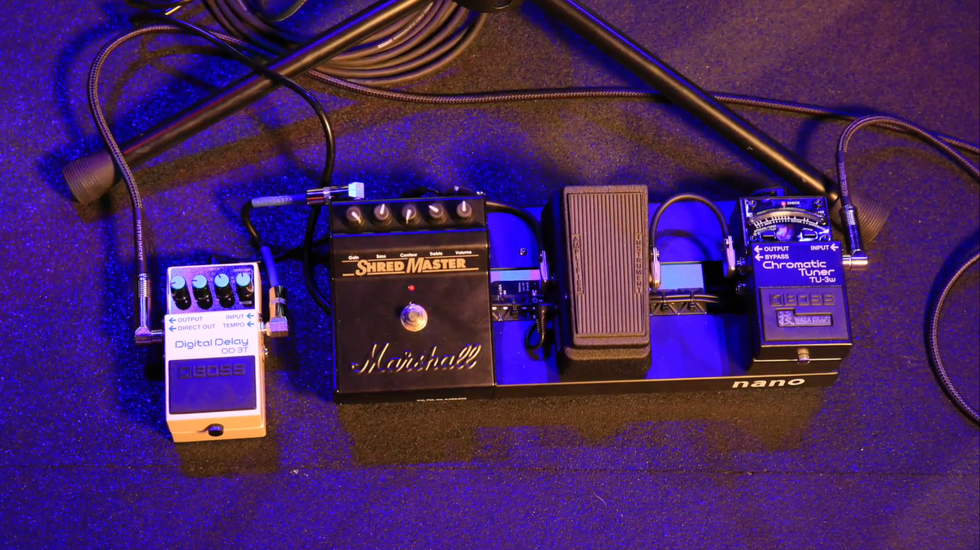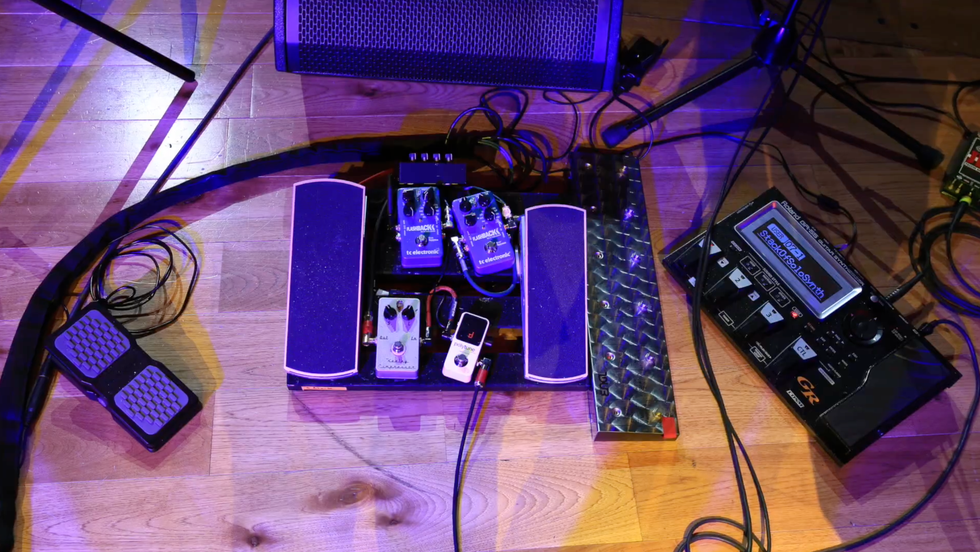Music gear can be many things: a set of tools, a collection, an addiction. I view my own gear as a set of tools now, but I have definitely spent time in the Gear Addiction camp. It has been a process to come to this “well-adjusted” place. Chances are if you’re reading Premier Guitar, we have some common ground here.
As you’ve probably surmised, the pedals, amps, and instruments used to make music are a huge part of my creative process. I don’t have any beef with someone who is a “guitar, cord, amp” type of player, but it’s certainly not me. Since I first stumbled upon the concept and methodology of feedback, I’ve been on a mission to make new sounds with the guitar. This mission has taken me down many roads using many methods, but my current favorite is collaboration. Not in the “Hey, can we write this chorus together?” kind of way, but with gear itself.
It might sound a little strange to think of collaborating with a piece of gear, considering it isn’t sentient. But in place of a brain is a circuit chock full of possibilities. Collaborating with your equipment is very much like improvising with humans, in that listening is paramount. Listen to what the gear produces in response to your input. Then adapt your input, or change the controls and listen again.
Obviously this isn’t the type of thing you do in a high-pressure studio environment or onstage. This is a practice method. I call it “the Circle of Truth.” It’s something that can be adapted any number of ways, but the concept remains the same. When I do the Circle, I set some pretty strict boundaries. Twenty minutes to set up, and that’s it. I usually like to start from scratch and grab some things I haven’t used in a while as well as some old stalwarts. I like to sit on a drum throne with the pedals arranged in a half-circle so I can spin around to reach different things with my feet, and it’s an easy bend-down to get my hands on knobs.
Once I’m ready to go, I dedicate the next 20 minutes to the act of interaction. As in many solo improv sets or exercises, I start simply—listening intently. Each move after that is informed by the sounds coming out of the speakers.
Of course, there are some things that don’t really play the collaboration game. When you’re dealing with a small rig, maybe a few simple pedals and an amp, the boundaries seem pretty clear. But even a simple rig can be opened up with some attentive knob tweaks, re-ordering, and creative playing techniques.
The flip side of collaborating with your gear is demanding things of your gear. If the pedal is designed to do that thing, you’re in luck. If not, you’re probably going to have a rough time. This is a tricky headspace, because great things can happen. Occasionally, you will find a new pathway neither you nor the manufacturer had intended. As I mentioned, one of my first forays into this kind of thing was feedback. I wanted to stand up and hear my guitar, so I put the amp up on my desk, which aimed the speaker directly at my pickups. Oh, feedback! For a while there, my main purpose in life was making that amp and guitar feed back.
The dangerous aspect of “gear demand” is the gear madness that infects so many of us. I remember whipping through catalogs, circling everything I thought would make me sound awesome: pedals and amps, and, of course, many pointy guitars! This can lead to a load of gear around the home and a big hole in the wallet.
The pedalbone connects to the headbone in the practice method the author calls “the Circle of Truth.” Listen to what your gear produces in response to your input, then adapt. Illustration by Benjamin Hinz
Demanding things of your pedals can be a real drag, because they are not actually capable of reading your mind or adapting their behavior. If you’re in pedal-purchase mode, one can quickly decide the pedal doesn’t do the exact right thing, and you move on to another, and another after that. Spending time and money on what you think a pedal should do doesn’t leave much time or space for a person to find out what a pedal can do.
Whenever I practice the Circle of Truth, it has always been an eye-opening experience. I find new sounds, new combinations that I would never stumble upon during a full-band rehearsal or writing session. But most importantly, I find what the pedals are really good at.
This gives me a much clearer path forward as a musician. Sometimes a pedal just isn’t going to work for me, and that’s fine. It’s a chance we all take. Knowing a pedal well makes it a lot easier to let go of—or to hang onto and use to it’s fullest. Since I’ve committed to really collaborating with my equipment, the giant pedal stack has been trimmed down to a (closer to) reasonable size, and I find my satisfaction with my guitars and amps has gone way up.
If you’re interested in getting more out of your equipment, give the old Circle of Truth a try. And hey, if it goes badly, you just spent 20 minutes practicing! Be sure to have your mom initial the sheet and turn it in to your band director on time!


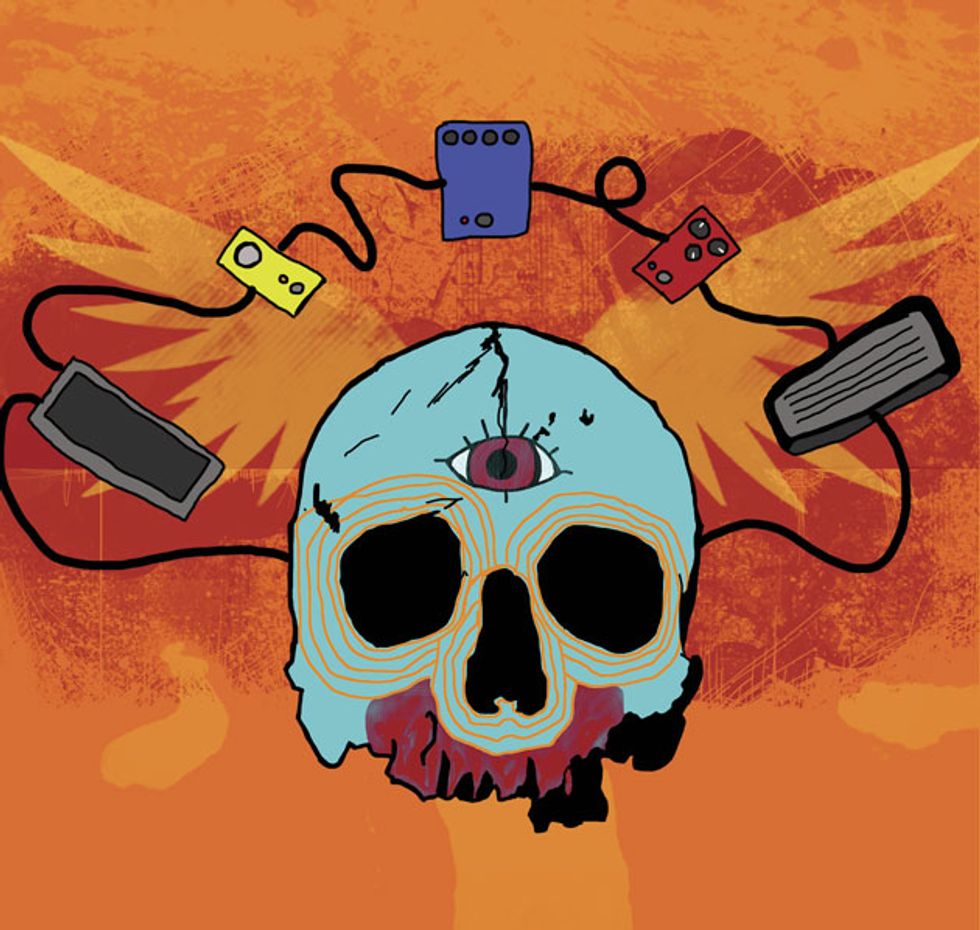

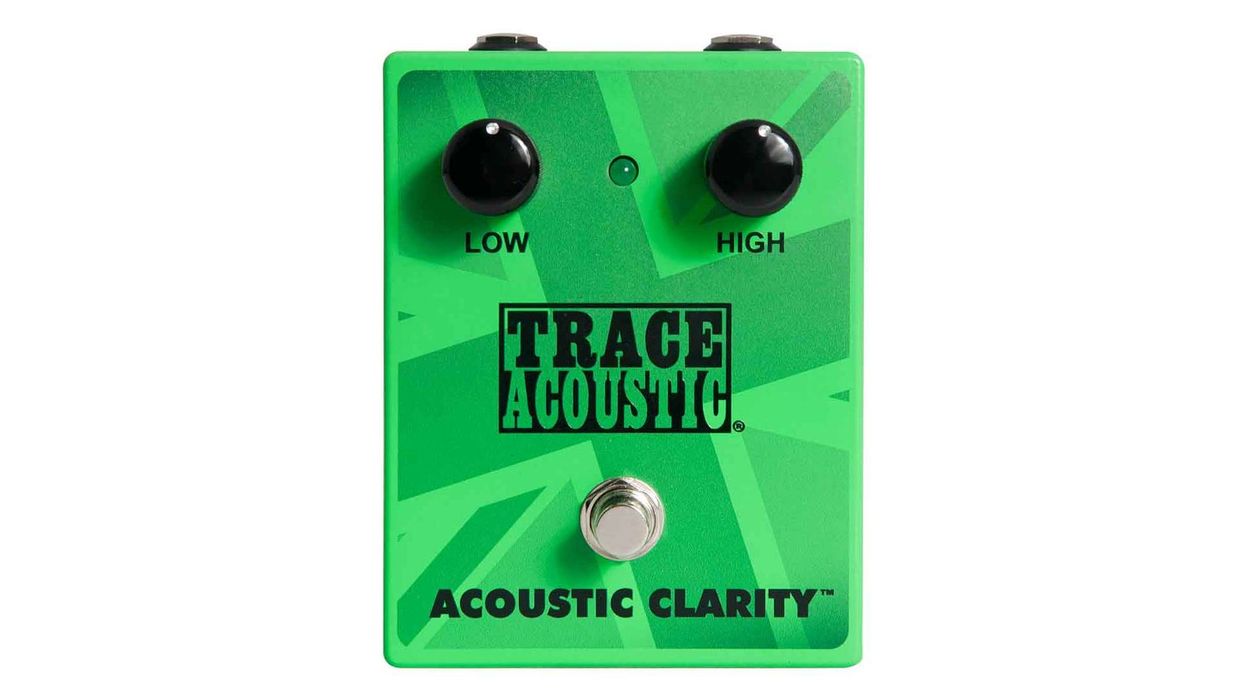





![Devon Eisenbarger [Katy Perry] Rig Rundown](https://www.premierguitar.com/media-library/youtube.jpg?id=61774583&width=1245&height=700&quality=70&coordinates=0%2C0%2C0%2C0)



